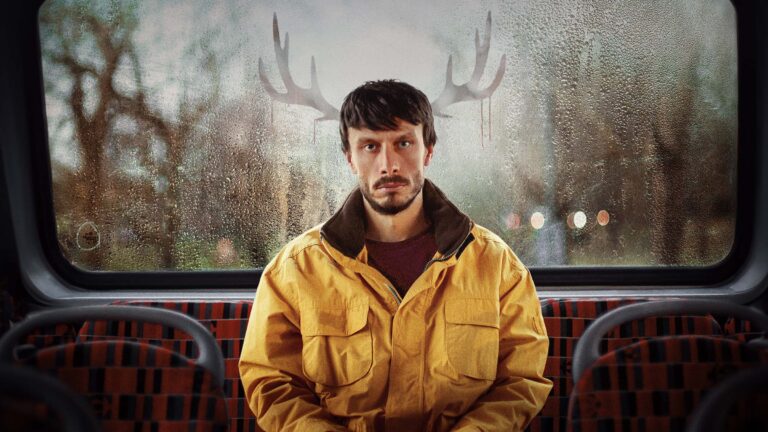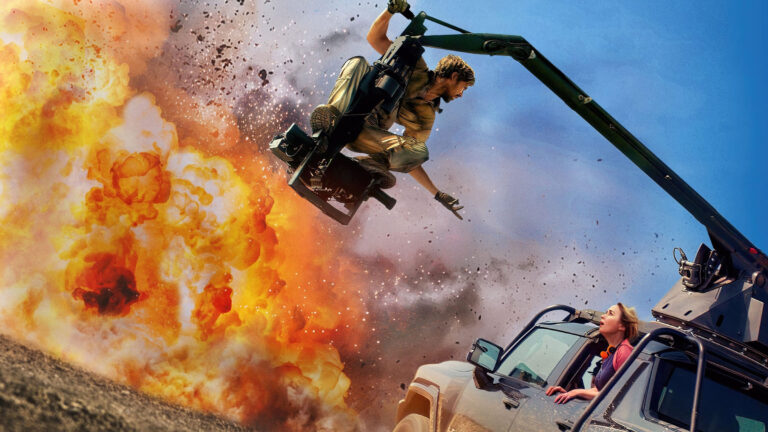The Jury Duty editing team had plenty of experience cutting unscripted tv before taking on the hit Freevee/Amazon Prime Video series. But is it actually an unscripted show? To hear their fellow Jury Duty editor Steven Rosenthal tell it, they were “using the techniques of a reality show for the purposes of a sitcom”. The end result is a series unlike any in either the unscripted or scripted comedy genres.
Jury Duty is a reality/sitcom tv series that chronicles the inner workings of a U.S. jury trial through the eyes of juror Ronald Gladden, a solar contractor from San Diego. Ronald is unaware that his jury duty summons was not official. Everything that happened, inside and outside the courtroom, was planned. And everyone in the courtroom, aside from him, was an actor. The series was produced by; Ruben Fleischer, Nick Hatton, Cody Heller, Gene Stupnitsky, Todd Schulman, Lee Eisenberg, David Bernad and Andrew Weinberg. Jake Szymanski also produced and directed.
In our discussion with the Jury Duty editing team, we talk about:
- Using reality tv techniques for a sitcom
- Managing billions and billions of hours of footage
- Never making fun of the hero
- One assistant, no waiting
- Breaking down the big reveal
Listen while you read…
Editing Jury Duty
Matt Feury: Diana, you have that “I hope he asks me the first question” look on your face, unless I’m reading you wrong. How did you get on Jury Duty?
Diana Fishman: My background is in documentary and reality. I did that for over ten years and then I switched to scripted comedy by way of improv. I took classes at the Upright Citizen’s Brigade and started doing production there.
I met a lot of people at UCB. A lot of the people that I work with are from that community. That’s how I knew Jake Szymanski. Many, many years ago, I worked on a branded thing for his movie. I don’t know if he remembered me from that, but we had friends in common, so when I was up for the job we already had a connection. Having worked on improv shows, scripted shows, and unscripted shows, I was sort of a shoo-in for this kind of job.
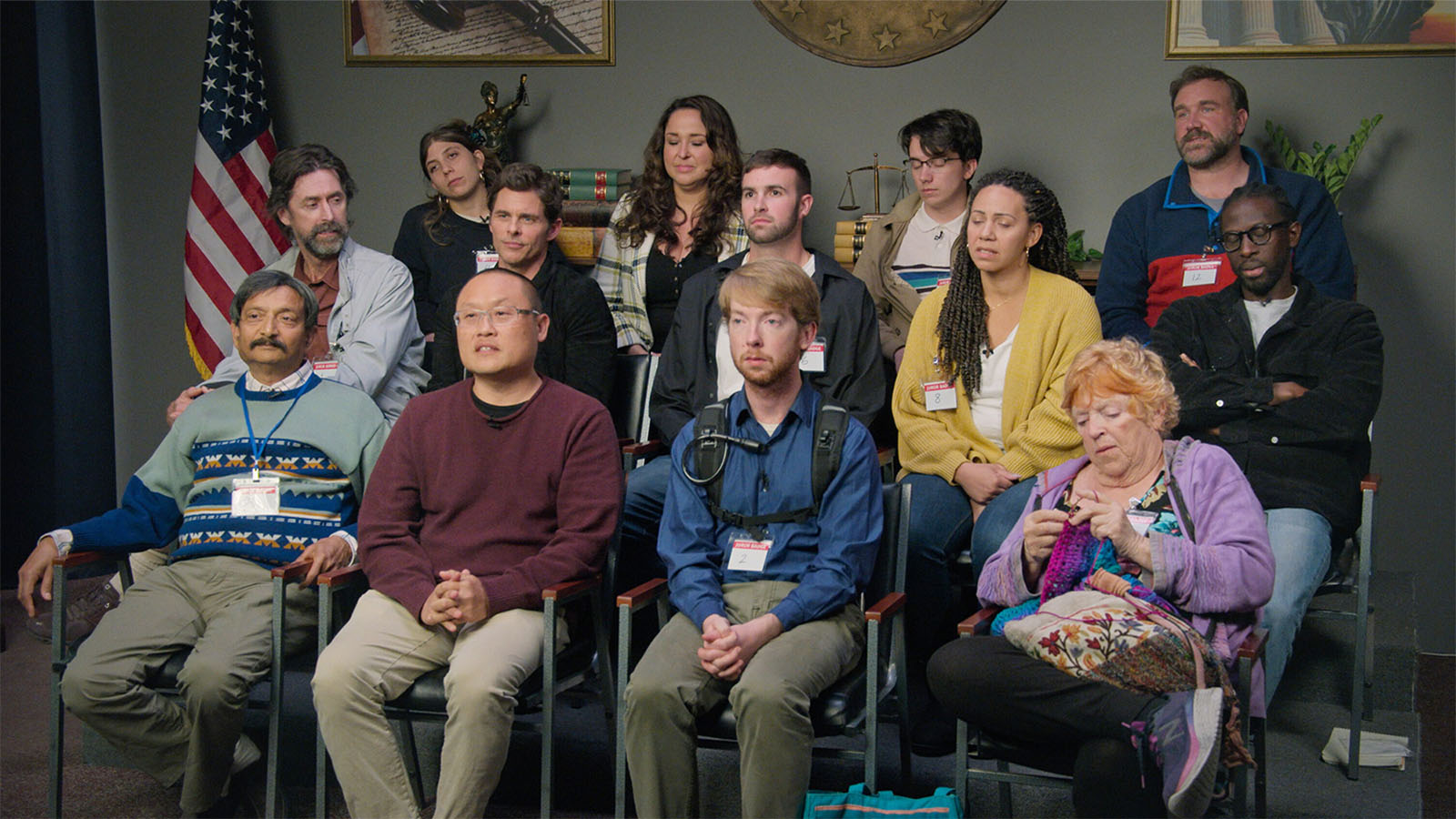
MF: I often ask editors if learning improv could help them in the cutting room and most of them don’t do it. Boy, have we got something to talk about. But we’ll get back to that. Adam, same question for you. How did you make your way to such an amazing show?
Adam Lichtenstein: I also have a documentary background. I’ve got an advertising background. I have a background in independent features. Comedy background. I don’t know how I first came to their attention. I’m sure my agent had a lot to do with it.
I know that once I got into the room that I was able to make an argument for myself. Then, three or four months later, I got the call. I think the interview happened in January and I started the job in April. I hadn’t heard from them between those two times. They must have met everybody in town and then came back to me. I don’t know what it was.
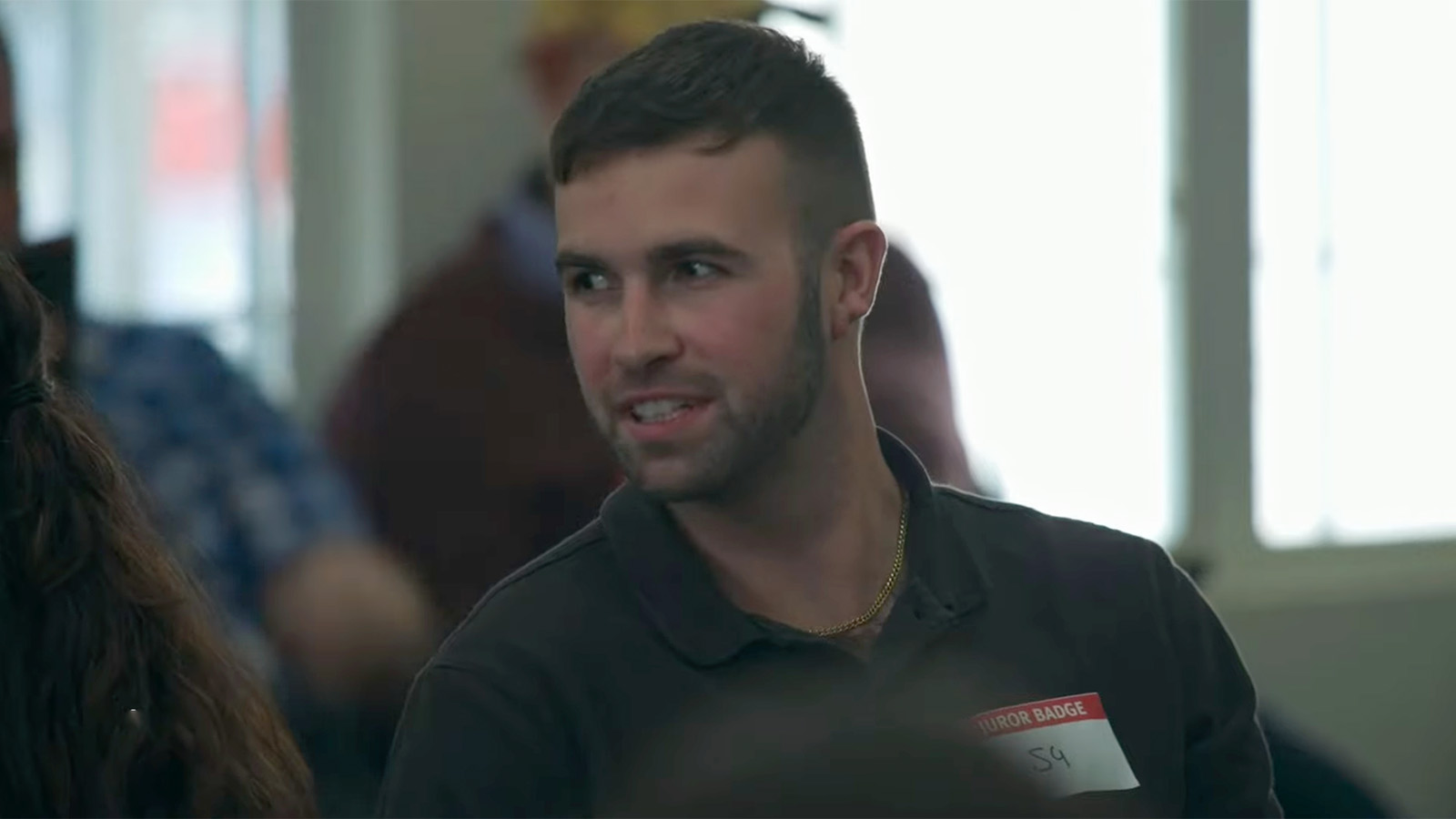
MF: Somehow that always happens for you, doesn’t it Adam? They always come back to you.
Adam Lichtenstein: They can’t quit me.
MF: Mary, I know you have a background in unscripted. How did you end up on Jury Duty? The show, I mean.
Mary DeChambres, ACE: You know, it just goes to show you the power of connection in our community. Diana Fishman was already on the show and she reached out to me. She said that they needed someone else to help finish the last episode. She asked for my resume and I happened to have already worked with one of the executive producers, many years ago, on a show for MTV called Rob & Big.
It was a buddy comedy, very endearing and sweet, the kind of show that’s exactly what Jury Duty ended up being, too. A very endearing, sweet buddy comedy. It all just meshed. When they saw that I had Ruben Fleischer and that experience on my resume, it was an instant interview. Cody Heller, the showrunner, and I really hit it off. She’s hilarious. We just clicked and that’s how it came about.
MF: The show is nominated for four Emmys, including Outstanding Comedy Series and Outstanding Writing for a Comedy Series. So, it’s not unscripted, but it’s not quite scripted. It kind-of is. How do the three of you define this show?
We were using the techniques of a reality show for the purposes of a sitcom.
Adam Lichtenstein: You know, Steven Rosenthal is the other editor that was a part of our team. I heard him say something the other day, which was, “We were using the techniques of a reality show for the purposes of a sitcom.” I thought that was pretty astute.
We always knew that this would be a hybrid of sorts, a question of tone, also. We just had to keep digging around until it revealed itself to us. That’s what this job was.
Eventually, we realized that, very oddly, the supporting cast was the “fiction” and Ronald Gladden was the “nonfiction”. That meant we could manipulate, within practical limits, for the sake of entertainment, the wild, unpredictable supporting characters.
Ronald was who he was, a solid pillar of decency whose mettle was always getting tested. At the end of the day, this job amounted to how patient and methodical we were going to be with this material by watching every frame from every camera, every track from every microphone, constantly, auditioning one piece at a time, searching for gems.

Sometimes those gems were overlapping with each other. There’d be something going on in this part of the room and, in another part of the room, there would also be something else valuable happening. More often than not, we weren’t being told that we were making good edits, but we were congratulated for finding an incredible bite or a reaction that told the story that we were telling.
That’s the kind of job this was. Somebody said, “Where’d you find that?” or… What do they say in the news business? “That’s a really good get.”
The real thing was finding a piece that made the thing more definable to us.
I really respected all of the other editors, and we all respected each other’s editing. But the real thing was finding a piece that made the thing more definable to us. A lot of what became of our unique collaborative style came out of a collective need to figure out what this thing was and to articulate it to each other, so that we could move forward.
MF: What was it like explaining Jury Duty to people? I think it’s one of those things that took a while for people to catch up on, until it reached a critical mass.
Diana Fishman: I think it really took off when people started posting clips on TikTok. People were really enjoying watching it. I don’t really use TikTok, but once I realized how many people were posting about Jury Duty, I started watching.
It was really fun to hear people laughing as they were watching. They were filming their screens and laughing in the background. I think that’s how the word got out more than anything. Twitter, TikTok, and all those platforms where somebody would watch it. A comic celebrity would say, “You have to watch this show!” and then other people would watch it.

That took the job away from us a little bit. I didn’t necessarily tell people to watch it. I would go somewhere and there would already be a conversation happening. People would be saying, “Oh my God, have you seen this new show? It’s like nothing I’ve ever seen!” and I would listen in. It was really fun to be in places and have that happening in the background.
MF: Had everything been shot by the time you started editing?
Diana Fishman: No. I was working while they were shooting. I came on first and, Adam, did you and Steven come at the same time?
Adam Lichtenstein: I came after Steven.
Diana Fishman: Oh, after Stephen. Okay. I was editing as they were shooting. The production was an all-encompassing thing for the producers and Jake, the director. There was very little conversation between us while they were on set.
I was acting like I was cutting a documentary that was happening in the now. I was stringing things out. I was seeing what was there. I didn’t get scripts or anything. That was kind of fun. We didn’t know what was going to happen. It could all explode in the middle of it.
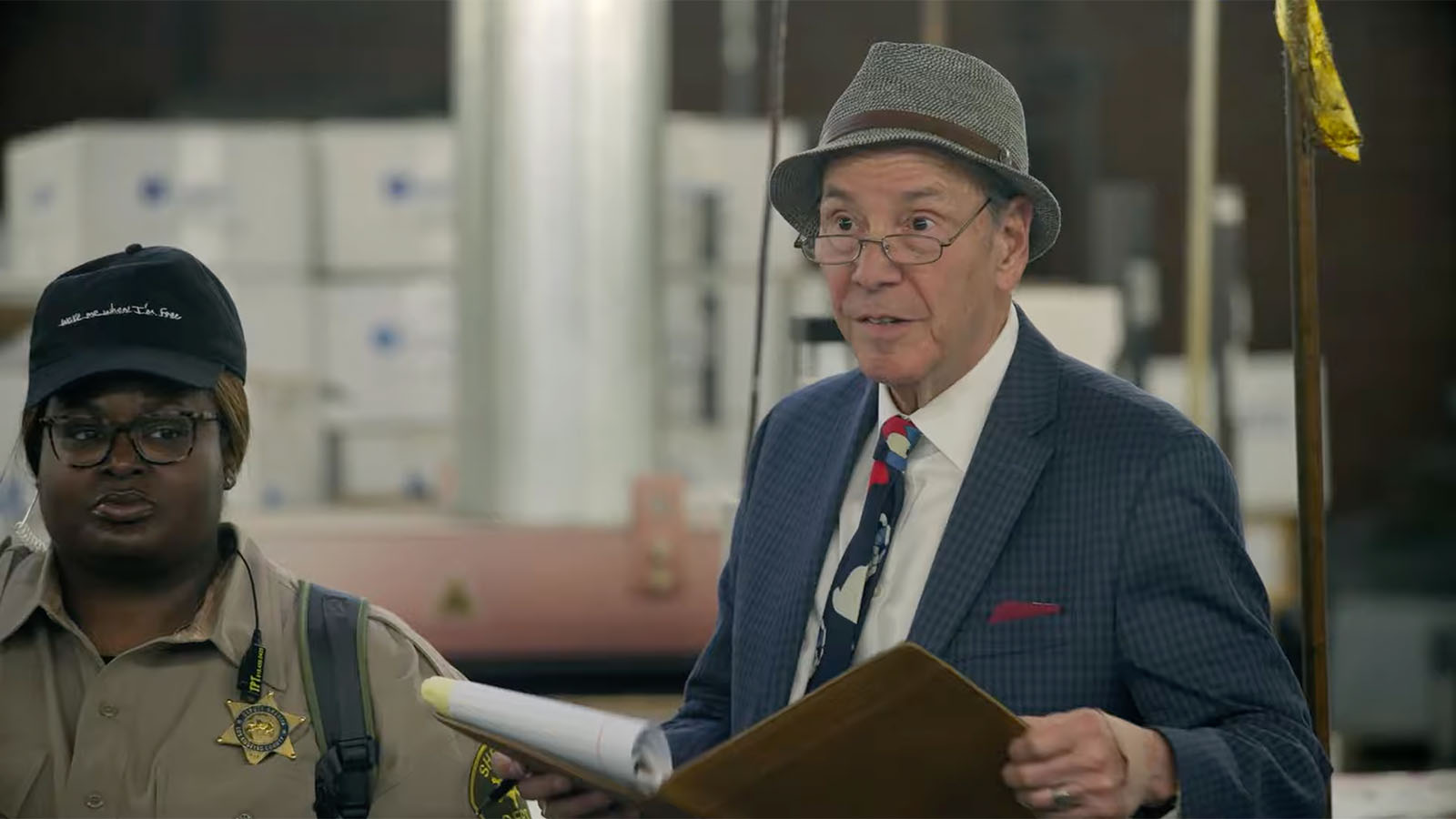
Maybe that’s why they only brought one person in at the beginning, because they weren’t sure how long they would be able to pull it off. I got to watch the reveal live, because I was already on. I don’t remember if it was live while it was happening or if I got the feed later, as a daily. It wasn’t very long after.
That was really cool, just to know that we had a show. If it wasn’t a positive experience for Ronald, then it wouldn’t be the show that it is, the show that everybody loves. That was very exciting to be able to do.
MF: Going back to how much footage there was… Typically, there are a lot of editors working on an unscripted show. Mary had this show’s finale by herself. Adam and Diana, you each had episodes that you did on your own. You also collaborated with one another. That is a lot of stuff to be working through for only one, two, even three editors.
Adam Lichtenstein: I never got a final footage count, but I think billions and billions is definitely close. It was like the McDonald’s hamburger situation.
MF: Billions of footage served?
Adam Lichtenstein: Yes.
Mary DeChambres: I had twice the billions because I had to watch all the behind-the-scenes footage. I had to watch all of the production meetings, everything on top of all of that.
MF: Mary, if there was going to be an episode that had multiple editors, you would think it would be that reveal.
Mary DeChambres: You would think, yeah! As everybody started wrapping up, I kept thinking they were going to jump on that final episode with me and nope, it was just me.

They treated this like a scripted show and it was one editor per episode, in a big way. In the earlier episodes, I think scenes got moved around, so the editors were jumping on each other’s things. But the finale was its own self-contained episode and it was a lot.
They first scheduled me for six weeks and I thought, “Great! They must really have their act together. They must have a great stringout. I’m just going to come in and make it all pretty.” Honey, it took twelve weeks to get that episode together.
MF: It was worth every hour, because it turned out great. When you watch the show and they have that big reveal episode, you see there is a control room with all these cameras that they’re tracking. Where were the edit suites? Were you in another courtroom down the hall? Where were you editing?
Adam Lichtenstein: They were shooting that at a location in Gardena, I believe.
Diana Fishman: Huntington Park.
Adam Lichtenstein: We were holed away in our own homes.
Diana Fishman: It was fully remote.
MF: How were you able to be remote? Did you just have local media?
Adam Lichtenstein: We were on Jump Desktop.
Diana Fishman: We had something like a Zoom room that was open all the time. We would jump in and out and it was very collaborative.
The directors, producers, and writers could also jump into our systems. We would screen that way. Steven is in New York, so we didn’t even have a place to go if we had wanted to do in-person work.
Adam Lichtenstein: Also, our assistant editor, Christopher Charkowski, was at his home in Santa Clarita, I believe.
Diana Fishman: We had other people at the beginning who were ingesting and grouping and fixing things constantly. There were twenty tracks of audio and twenty cameras or so. We had a bunch of people at the start, but as the season went on we had only one assistant editor.
MF: One very busy assistant editor. I mentioned the control room. When you do the reveal, you see Ronald walk in there and see this wall of monitors. Were they truly just monitoring or were they doing any kind of line cut that you could work with?
Adam Lichtenstein: Robyn Adams, our supervising producer, had a lot of knowledge about the footage. I don’t know if that was because she was watching it live and taking notes or if she had tapped into a system and was doing it that way. She was an enormous source of knowledge and wisdom and opinions. But there was never a sequence that we referred to from her.
MF: How did you organize the media? That had to be a huge part of your success. I heard that, at times, there were as many as thirty cameras. How do you organize all that?
Diana Fishman: They were all grouped. I think it was grouped by day. It was a while ago now, but I think we approached it like we would have approached a reality show or a documentary. It was by day. In that way, I think it was a stack.
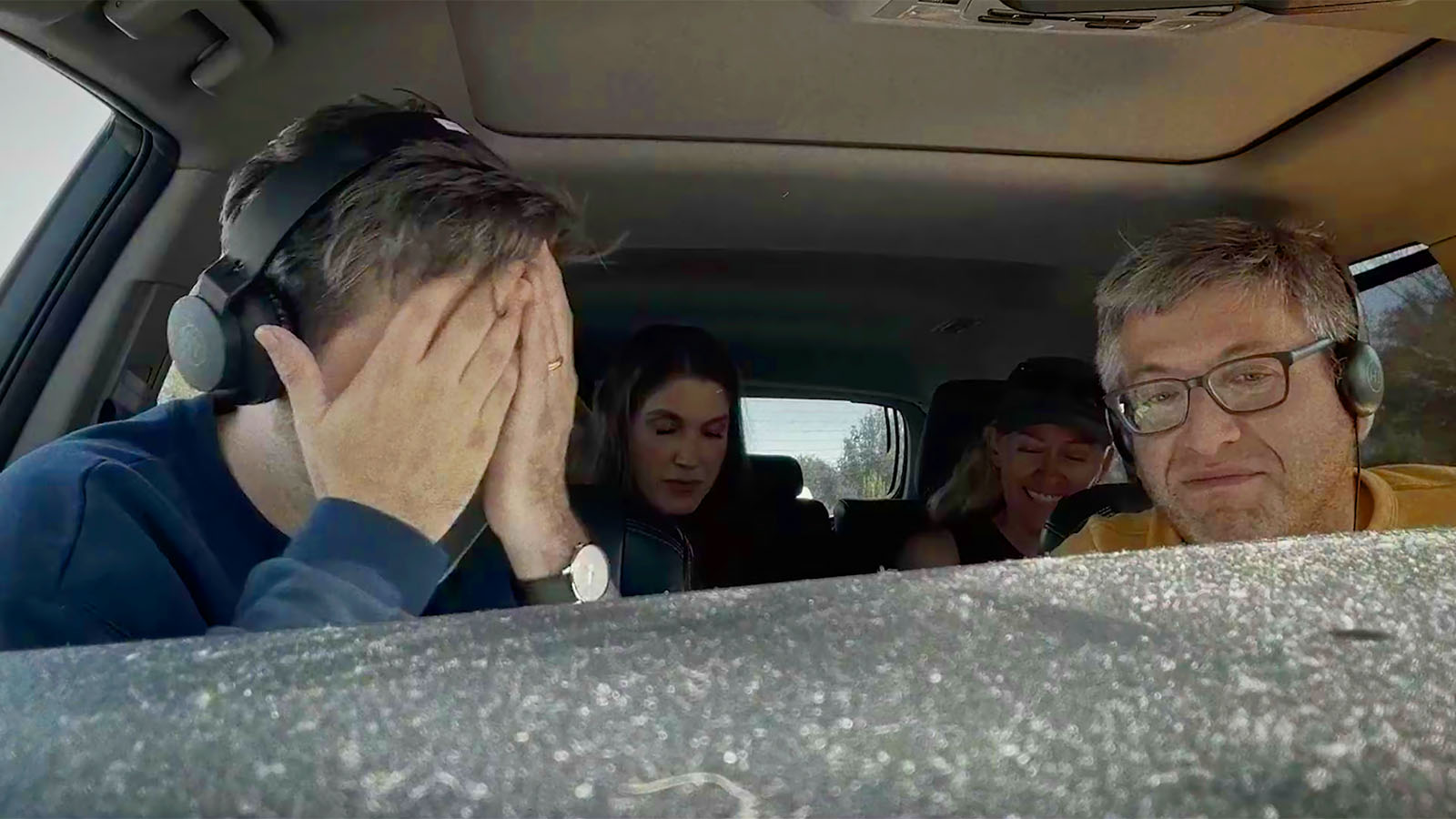
Not all cameras were going all the time, but you could follow as the day went on. They would leave the courtroom and you’d know, “Okay, I need to go to these other cameras because now they’re going into the boardroom.”
Then Ronald did diary cams on his own at night. He would talk into his own camera and that was all him. We had those separately. The OTFs (on-the-fly interviews) might have been separate. I don’t entirely remember.
That was how the footage itself was organized. I don’t know how you worked, Adam. Mary was a whole different beast, I’m sure. I would string together sequences that were maybe a moment or a topic and then I would watch them with Jake or the editors. We would watch them together and figure out how we were going to use them.
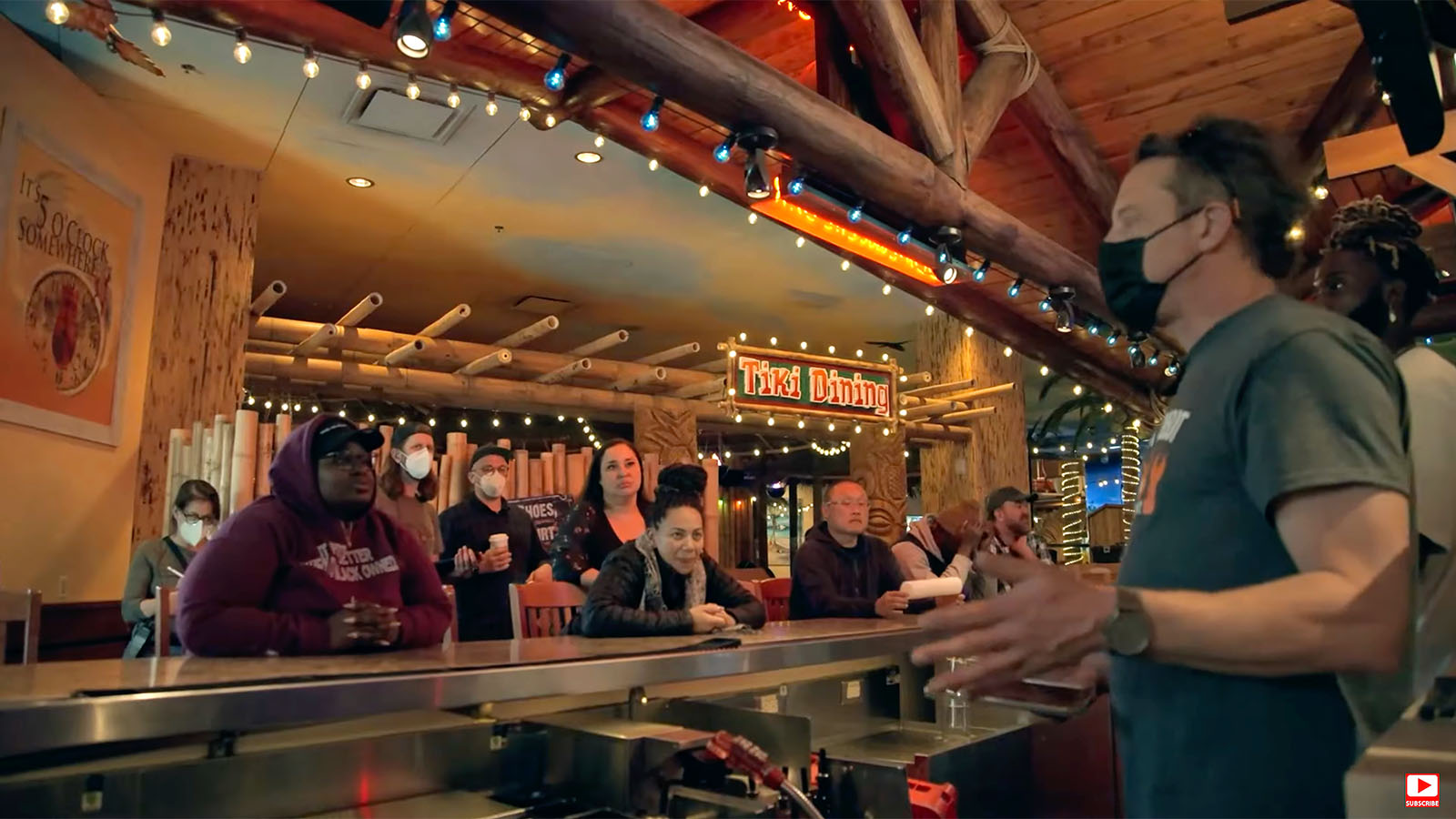
There were lots of those, because you never knew what was going to be relevant. There were beats that they wanted to play, like the taco truck or the waiting room or jury selection. But there were many ways those could go. I had to keep track of, “Wait, I remember a beat when they were talking about that. Let me pull up that sequence.”A lot of those were left on the cutting room floor, so to speak. That’s the way that I approached it.
They filmed all day in the courthouse and we would just watch. The first two days were supposed to be episode one and as it went on, the storylines shifted. It didn’t happen chronologically, necessarily, for the episodes, but at the beginning it was.
MF: How about you, Mary? Your episode was unique because it was sort-of rebuilding the past three weeks. Was your approach any different than the way Diana described hers?
Mary DeChambres: I would say my approach was completely different than Diana’s because I was working with a very finite amount of time in terms of the reveal. That was an eight-hour day, twelve-hours if they had dinner later at night. I watched all of that footage and that was the framework I started from. We filled in from there. We would throw in flashbacks or we would flesh out a story that they told during the reveal.
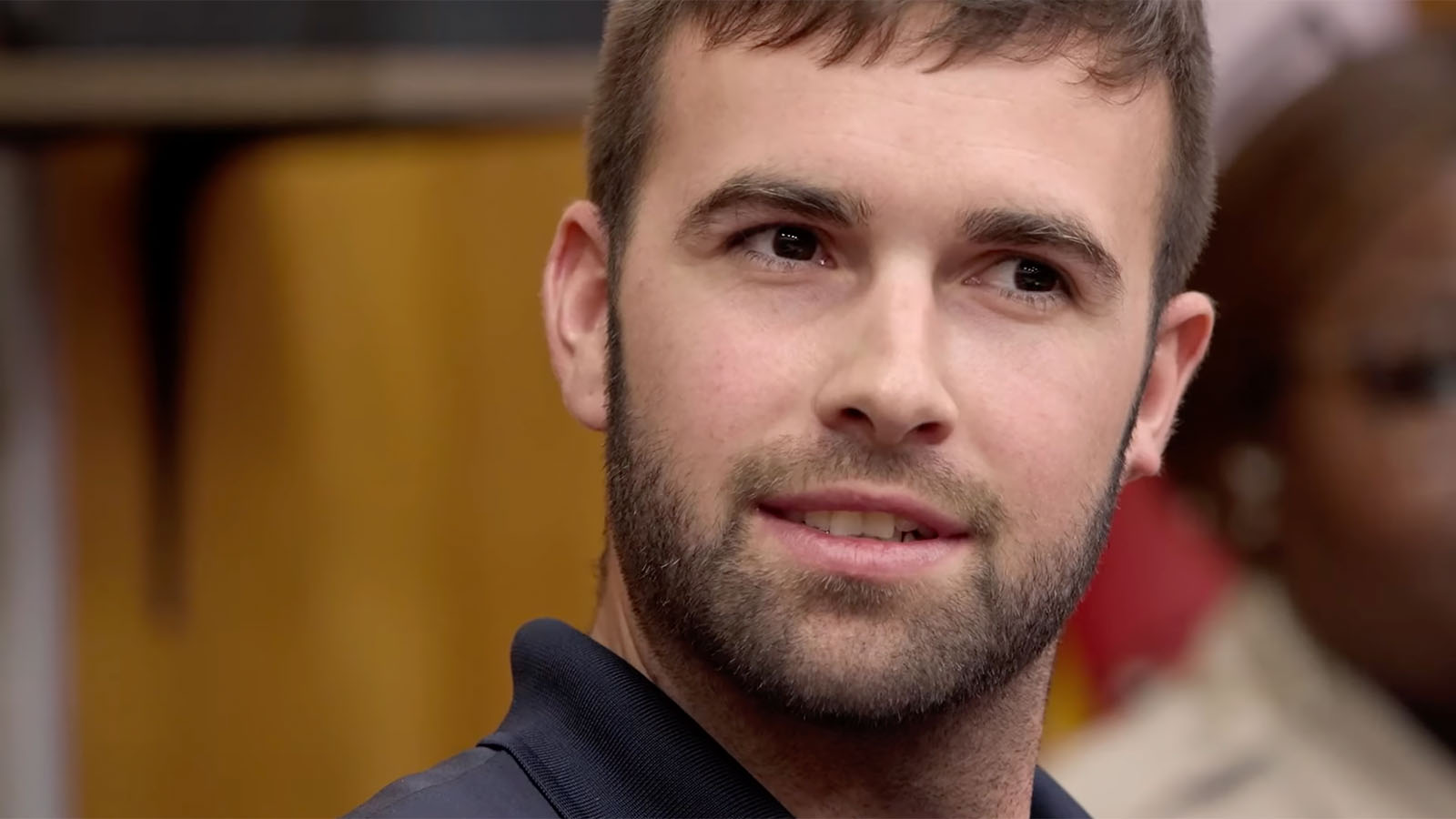
My favorite part of the reveal is when Ron Song, who played Ken, reveals that they all had to wait to order a drink when they’re at Margaritaville because of production guidelines and all that. They couldn’t drink unless he ordered a drink.
When we watched the footage of the cast at Margaritaville, they’re all just prodding Ron. “Hurry up and buy a drink! Get a drink! You know you want something good!” They’re all egging him on.
It takes on this whole other life and meaning. It was so hilarious. So I said, “Yes, that’s going in the finale.” It was a lot of discovery in that way. As they were telling their stories, we would find these little gems in the raw footage of what they were talking about.
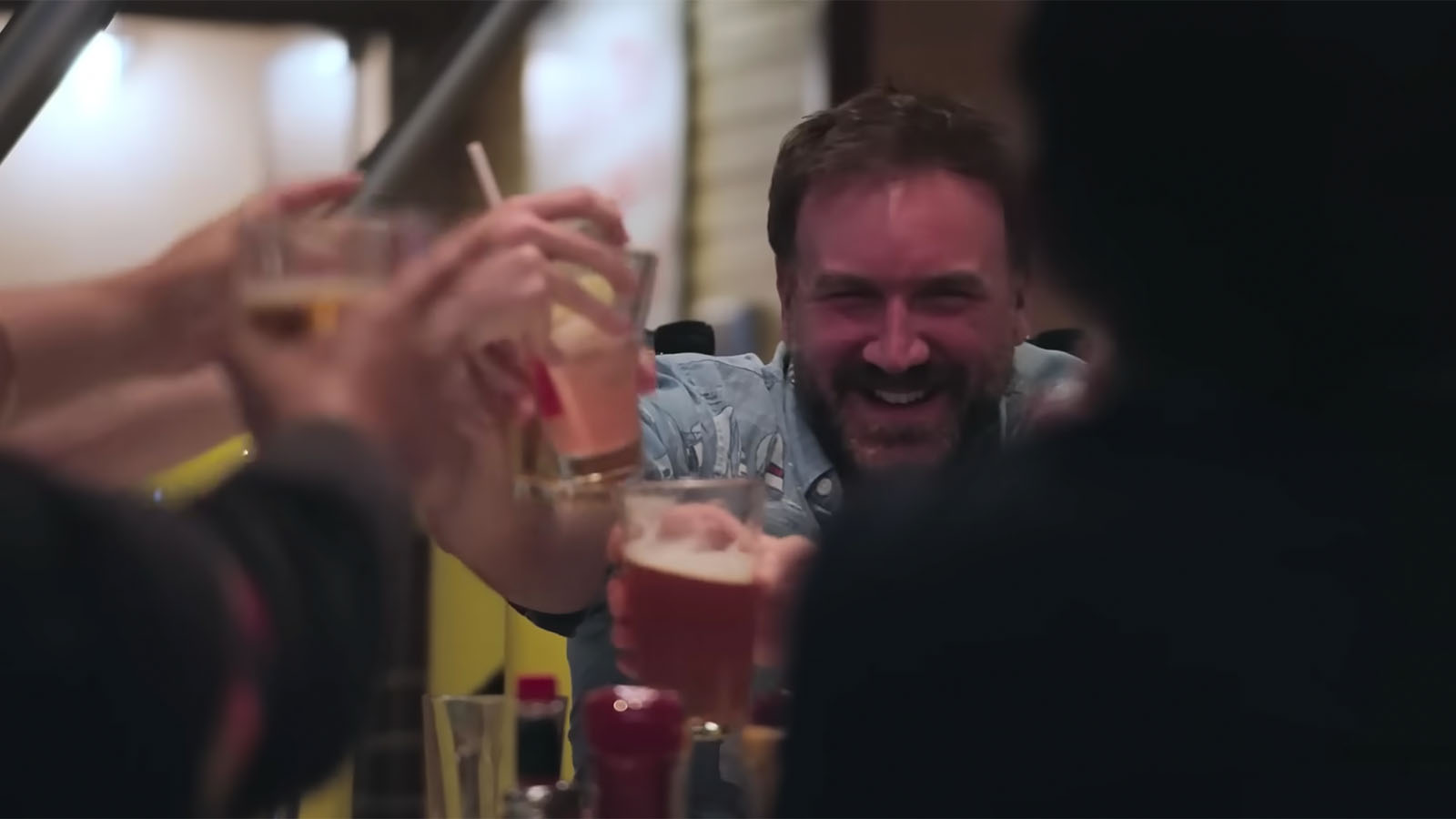
MF: Just hearing the concept of the show, you might think, “How are they able to fool this guy for so long?” In a way, they didn’t. There were times when Ronald was getting wise.
I thought it was interesting how the showrunners would do resets. “Ronald’s getting hip to what we’re doing. Let’s have a really boring day in court.” Was the same amount of footage captured on those days? Were you notified, “This is not dummy footage. There’s no real comedic beats in here. You don’t have to really scrutinize this.”
Adam Lichtenstein: That’s a great question. I always felt like there were gems everywhere, even when they weren’t hitting a beat.
We built stuff from a huge pool of cameras and mics and things that were beat out. I found value in so much stuff that had been separated out, but also in stuff that might have seemed boring to anyone else. I always found something great about it.
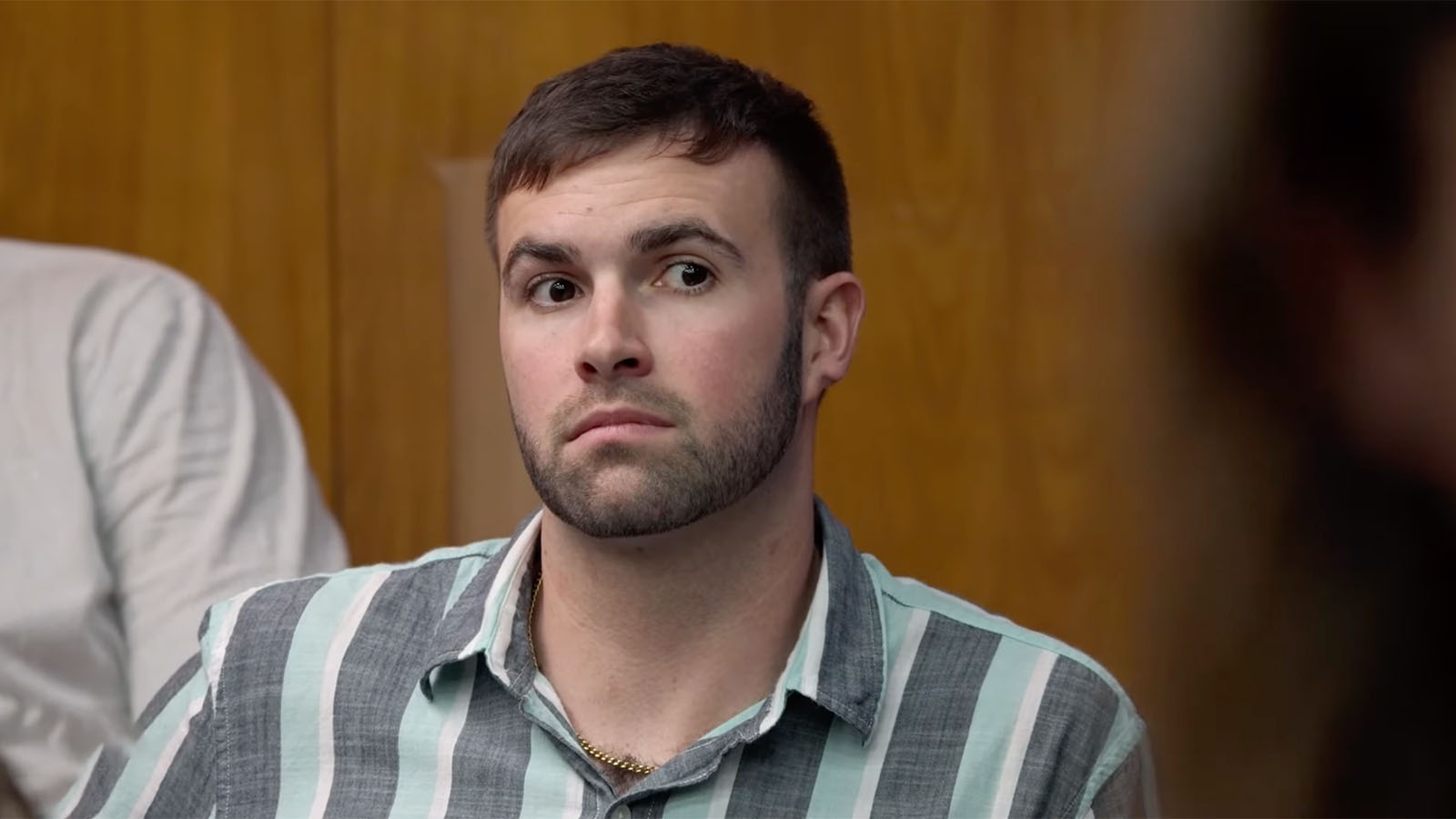
These were great supporting characters and great writers. Andrew Weinberg and all the execs had really great ideas. Nick Hatton and Cody Heller, of course, and Jake Syzmanski. These are all brilliant people who are always on their toes. You see them in Mary’s episode, doing their jobs. The amount of talent that was behind this show was really quite incredible.
MF: So many of these great gags are things that an actor is doing in the background just to amuse themselves.
Diana Fishman: There was also the challenge of making the court case watchable for the viewer. You had to follow the court case enough so that you were invested when they were in deliberations.
Even if the case is stupid and unrealistic, you want to care about it, because Ronald cares.
Sure, they might have filmed all day and it was a boring day, so to speak. But we needed to follow each of those testimonies and which characters were going to come up later. Even if the case is stupid and unrealistic, you want to care about it, because Ronald cares. You want to see him turn the jurors over to the side that he believes in.
There was that balance of watching and finding, “Okay, this is a boring testimony, but what is the one funny thing?” or “What is the thing that they’re laughing about? How can we build a moment out of that so, when it pops up in deliberations, we can use it?”

MF: I want to circle back to the tone thing that Adam brought up. The show has its laid-out comedic beats and there are also the ones that you as the editors find. But, because Ronald is a wildcard, you don’t always know how he’s going to react. He could have been a jerk.
Adam Lichtenstein: Ronald really carried a lot of what became the tone of the show and the comedy of the show. It fell on our shoulders to make sure that we were always checking in on Ronald and his experience. We never took his authentic response for granted. It was a response so authentic that it seemed to be hardwired into that of the audience.
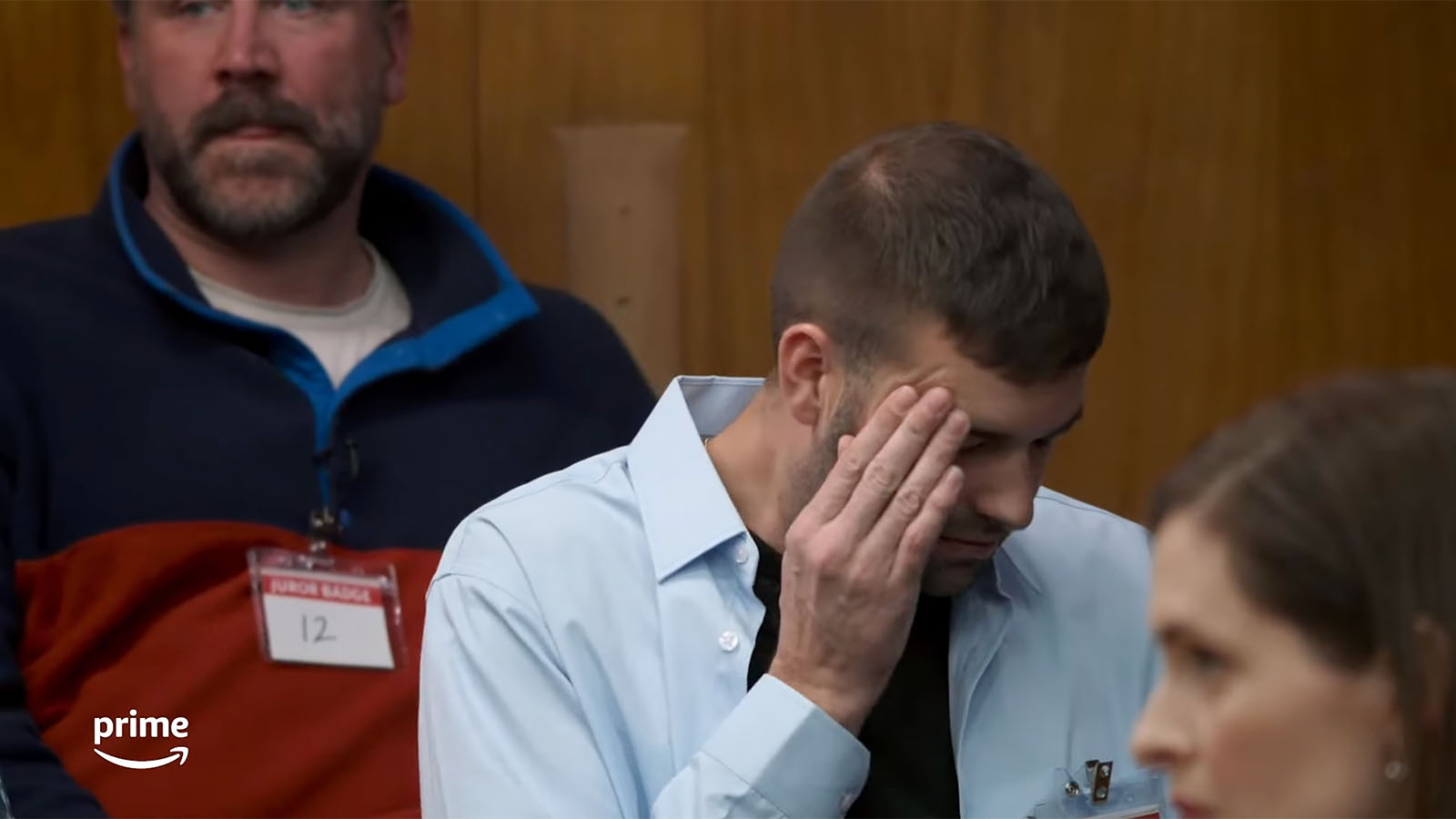
Luckily for us, Ronald was a compassionate, kind-hearted, generous person. He was the best part of the audience and ourselves, whose effective performance was that he possessed a lot of affection for his fellow human beings. No matter how idiosyncratic they were, he always had a place in his heart for them. He was our guide and our beacon. He always held the key to how to play a moment.
In terms of tone, he always held the key to what the show should be like, in addition to the things that had been laid out. In another way, he possessed a Stan Laurel type of deadpan upon which we could project our own feelings. We had a lot of good, incredible luck with a really great guy who had a natural charisma and who shouldered, along with us, the tone of the show.
MF: Talk to me about the big reveal at the end, when the judge tells Ronald, “The only thing real here is you.” You don’t know how this guy is going to react. How would you react if you just found out the past three weeks of your life were fake? I would love to know about how you edited that particular sequence.
Mary DeChambres: I knew the whole series was building to that moment. Everything is leading up to him finding out about this craziness behind the scenes. So I edited that moment with that kind of gravity in mind. This moment is everything.
I trusted my gut with the timing on a lot of those shots and the expressions, because I wanted to slowly start putting in some smiles and smirks and some little glimmers. It felt like the tension in the room was about to pop at any second with a big burst of laughter and applause.
I wanted to hold that tension as much as possible. Some of those shots are really helping with that. Also, I wanted to see his expression as he’s taking it in. “Wait, you’re all actors?” Then they laugh back, “Yeah, we are!” A lot of that was just trusting my gut.
I always cut it dry. The music is the very, very last thing that I put in.
My method of editing, no matter what it is, is that I always cut it dry. The music is the very, very last thing that I put in. That has served me so well with this show in particular. If you notice, there’s very little music, almost none. That’s so rare for me, especially in a reality show. It’s usually wall-to-wall music.
When I’m working on a show like Project Runway, we’ll have a moment where there’s no music, just to punch a line. That’s a technique we use there. I didn’t have those tricks or techniques here. I had to rely on the timing and the pacing, even just playing the dead air in the room so that you feel the moment with him.
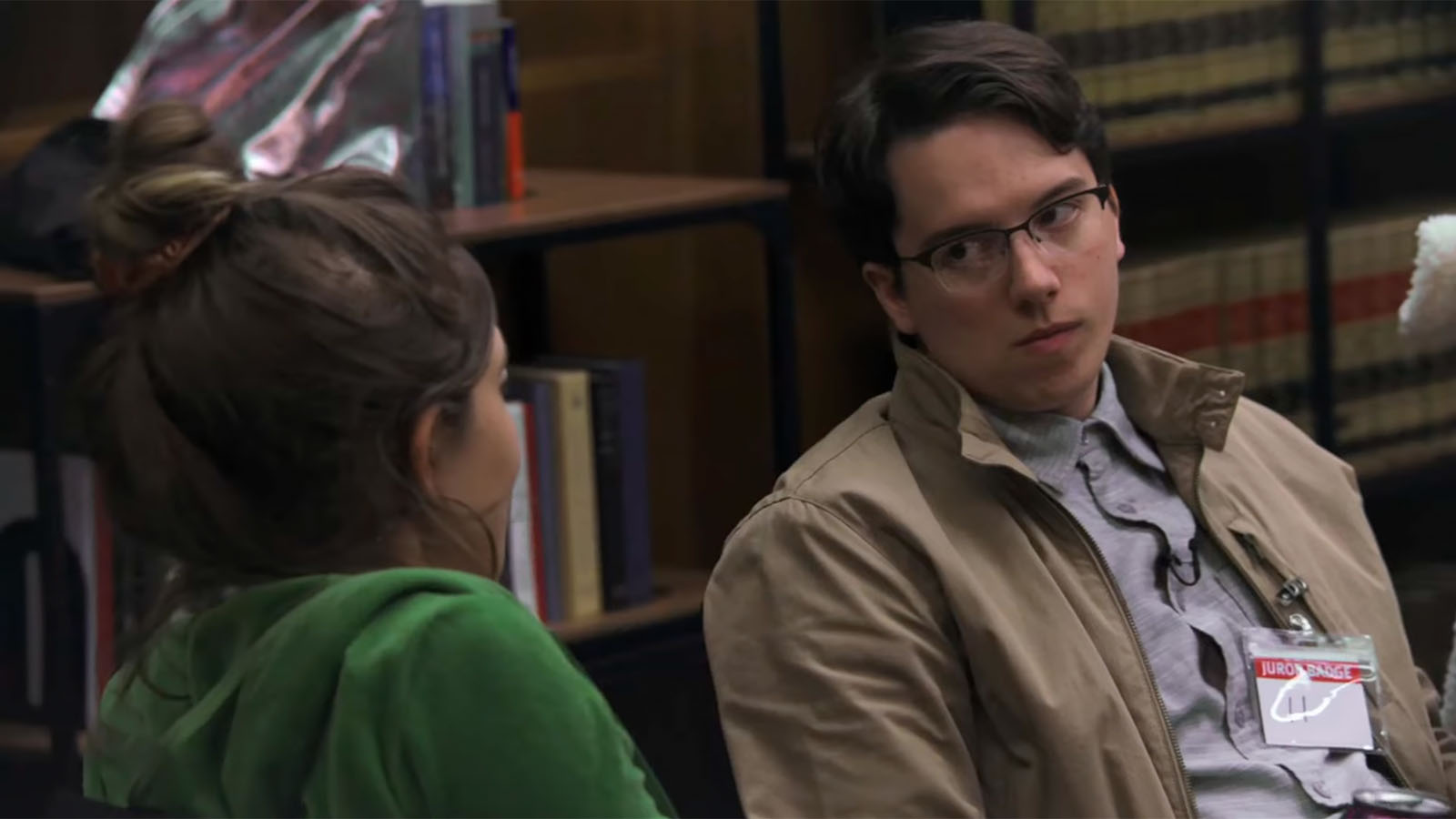
It was challenging, but it was really fun. There’s some continuity issues, if you look closely. That reveal took quite a while. All of the actors, all of his fellow jurors, actually got up and spoke to him. They said some really endearing things about how much the experience meant to them and how he was so special. He was taking all of that in too.
We didn’t show that because, to me, it felt a little staged. They were these rehearsed speeches, whereas when he walks into the next room, when he settles into where they always do their daily interviews, that’s when he relaxes and says, “Wait, what? You guys really got me!”
You soften into it a little more. That was all part of the reveal. He’s grasping all of these concepts and softening into it. It’s all hitting him. It was just a great way to discover, with him, what was all happening.
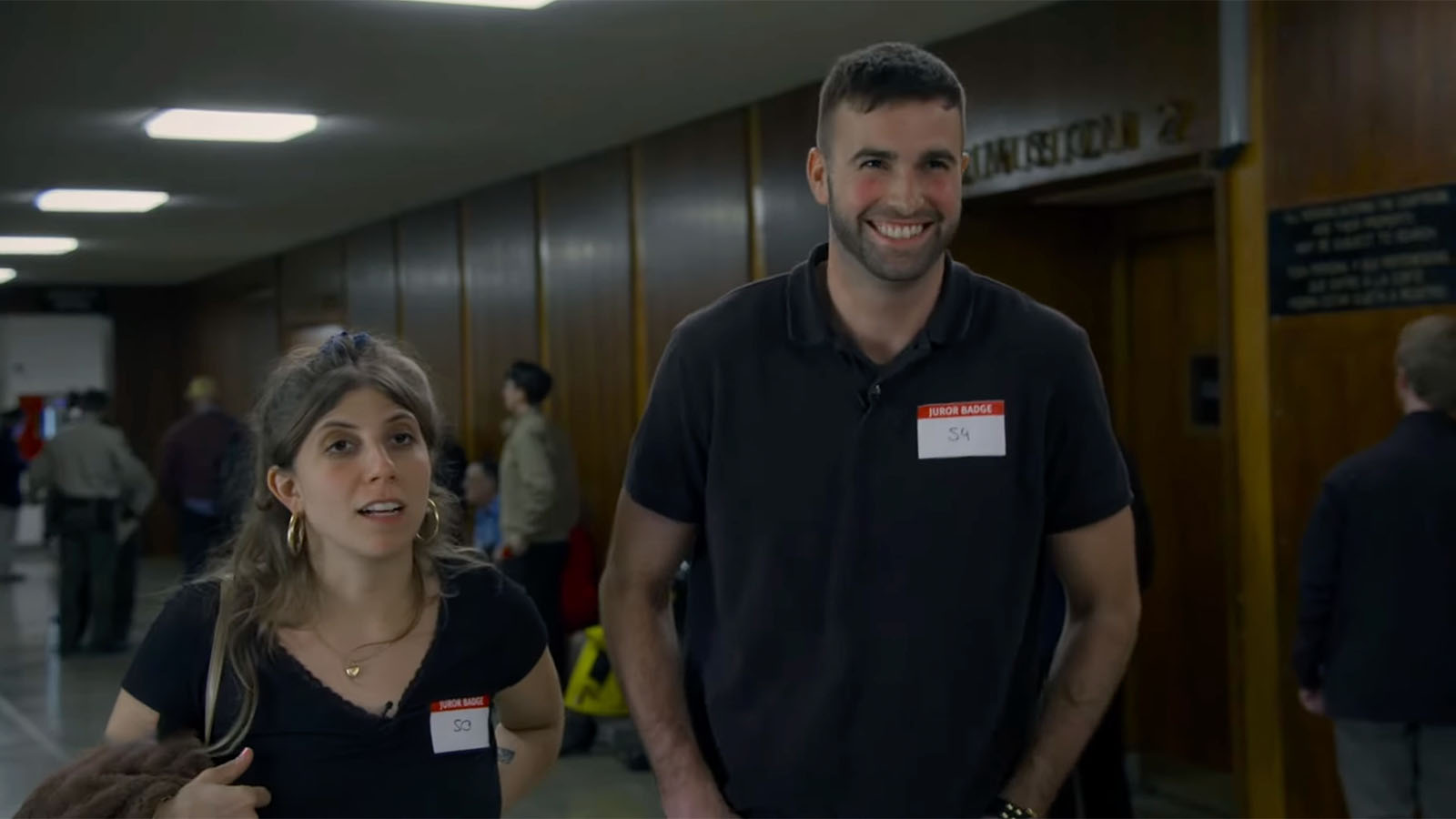
MF: One way to soften the blow as well as to give him $100,000. That never hurts. That’s another beat, how long are you going to wait until you reveal that he just won $100,000?
Mary DeChambres: That was tightened quite a bit. The judge went on to say even more about the things he did that made him stand out as a hero. There were all these bullet points that the judge was going over. It was a lot, so we narrowed it down to just the three shining-star moments, or the funny moments. “You took the blame for James Marsden’s shit in the toilet”, that kind of thing. That is a big, funny moment where they all laugh. You needed that moment of levity there.
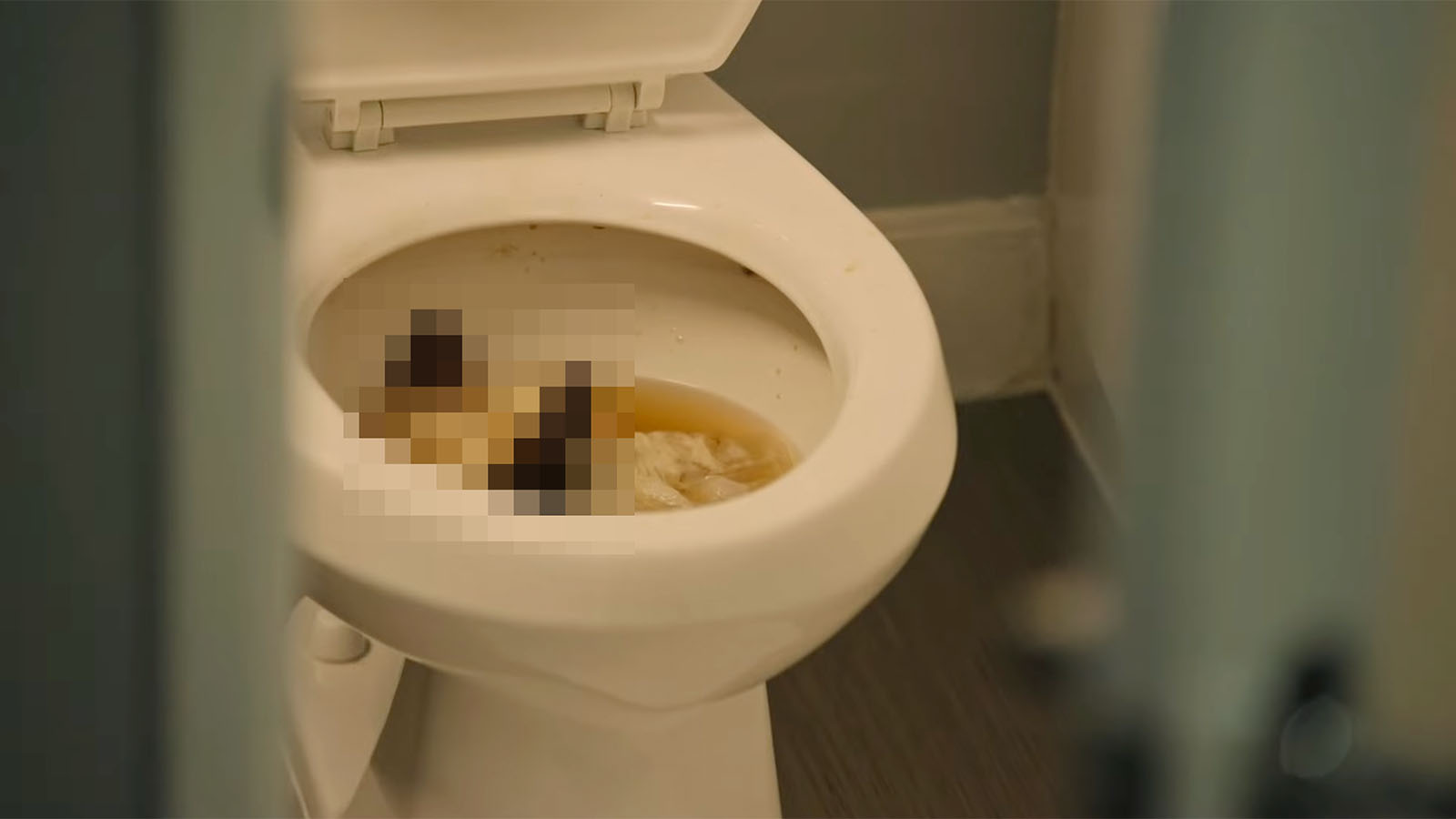
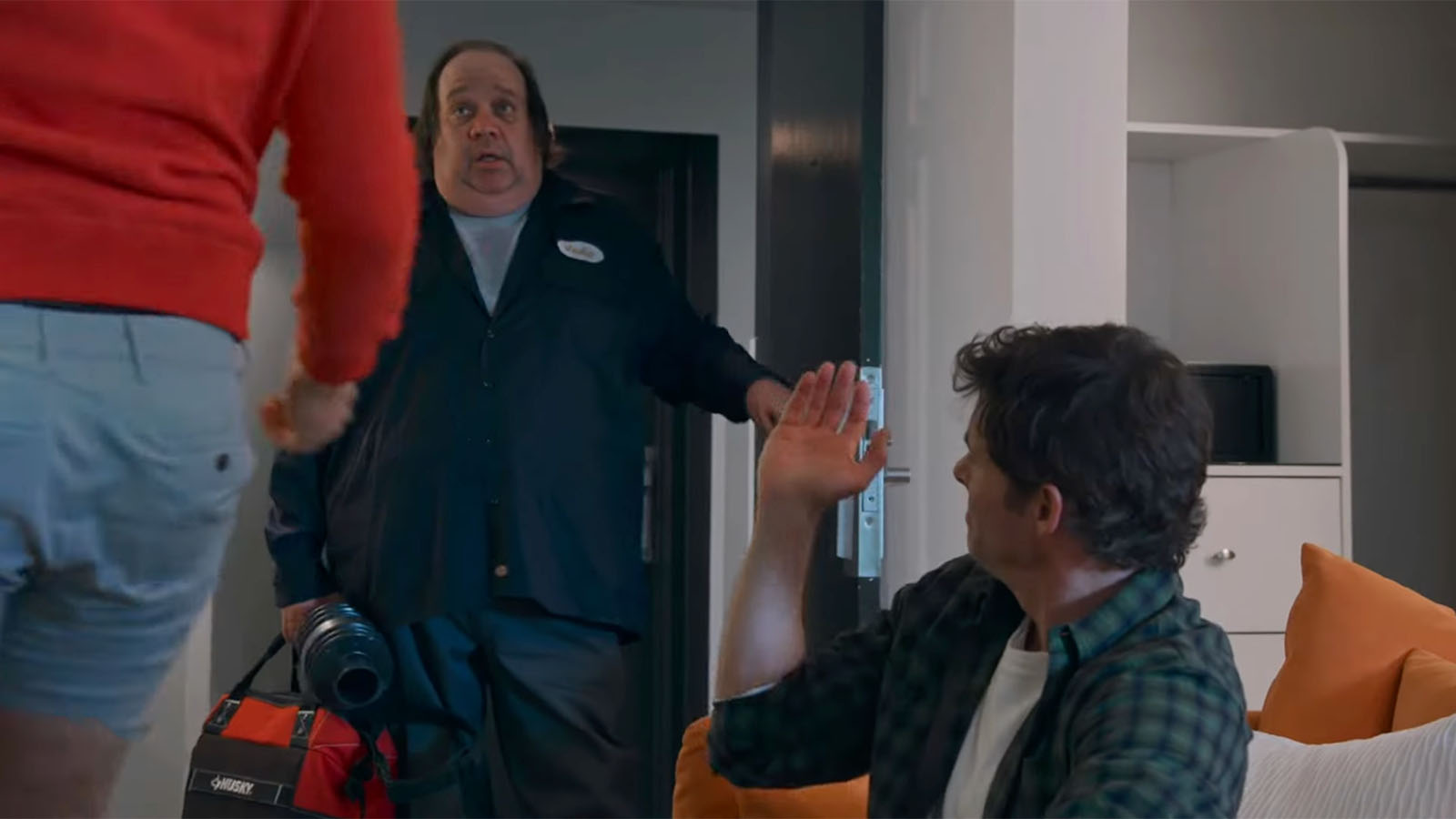
I wanted to hurry up and get to the big reveal where he walks into the room and sees all the cameras. That’s the big moment you’re waiting for.
MF: Ironically, that’s the money shot.
Mary DeChambres: Really, it kind of is. That’s when he’s taking it all in and everyone’s applauding. “Whoa, all of this has been happening behind the scenes?”
It’s my favorite show I’ve ever worked on, honestly. I’m truly a voyeur in a way. I love to watch people and that’s what I got to do all day, watch people, watch their reactions and put it together and make it fun.
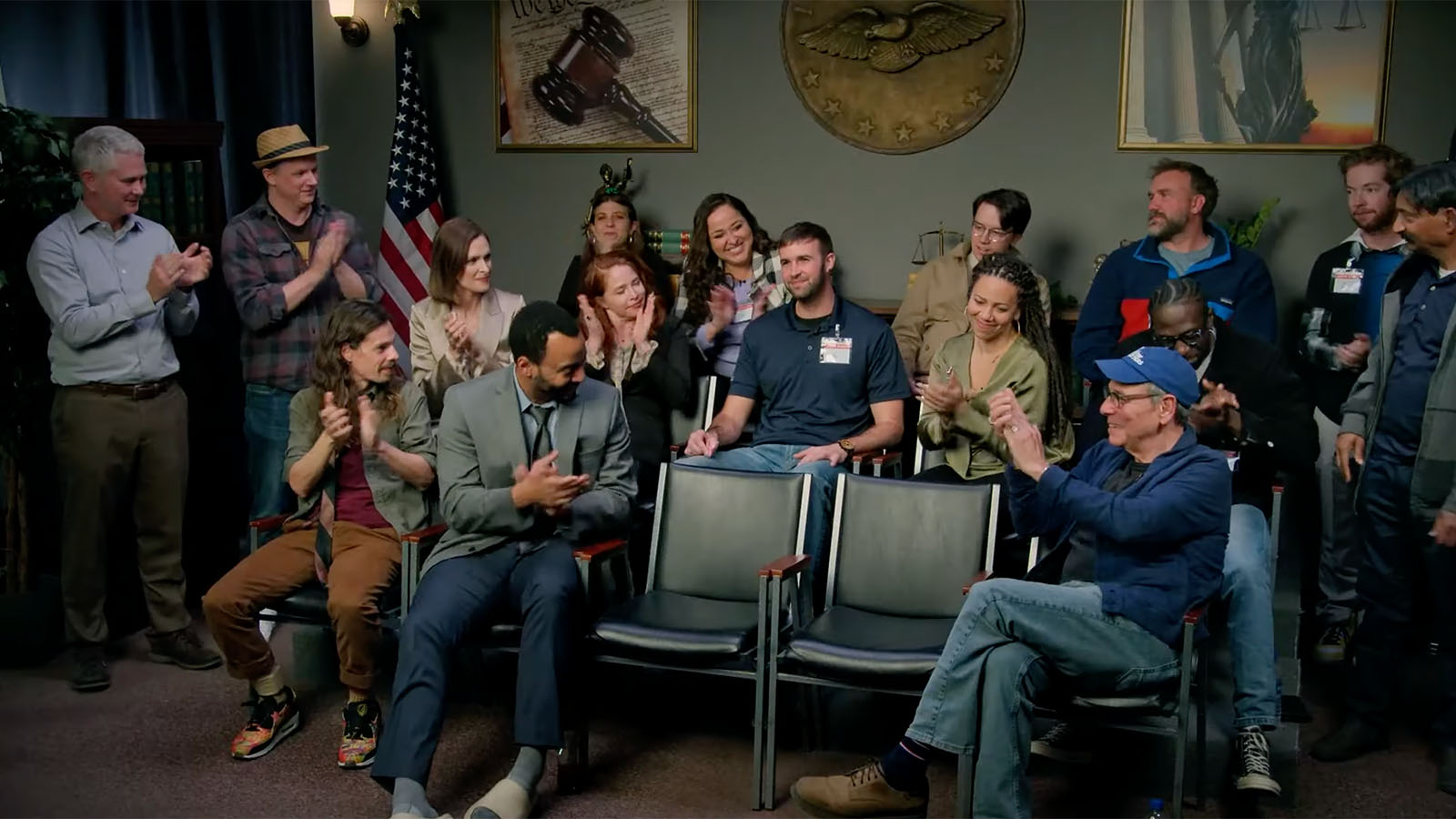
MF: In that last episode you get to see some things that you didn’t see the first time. For example, the actor playing the bailiff messed up and called an actor by her real name.
If you look at the commentary episodes, which are so much fun, they talk about, “How do they know what to keep and what not to keep?” I would love to know if there was anything that got left out that you wish could have stayed in?
Mary DeChambres: I wish we could have made Margaritaville its own episode. There were so many funny things happening in Margaritaville. Anytime they’re away from the courthouse, I feel like the comedy is elevated even more.
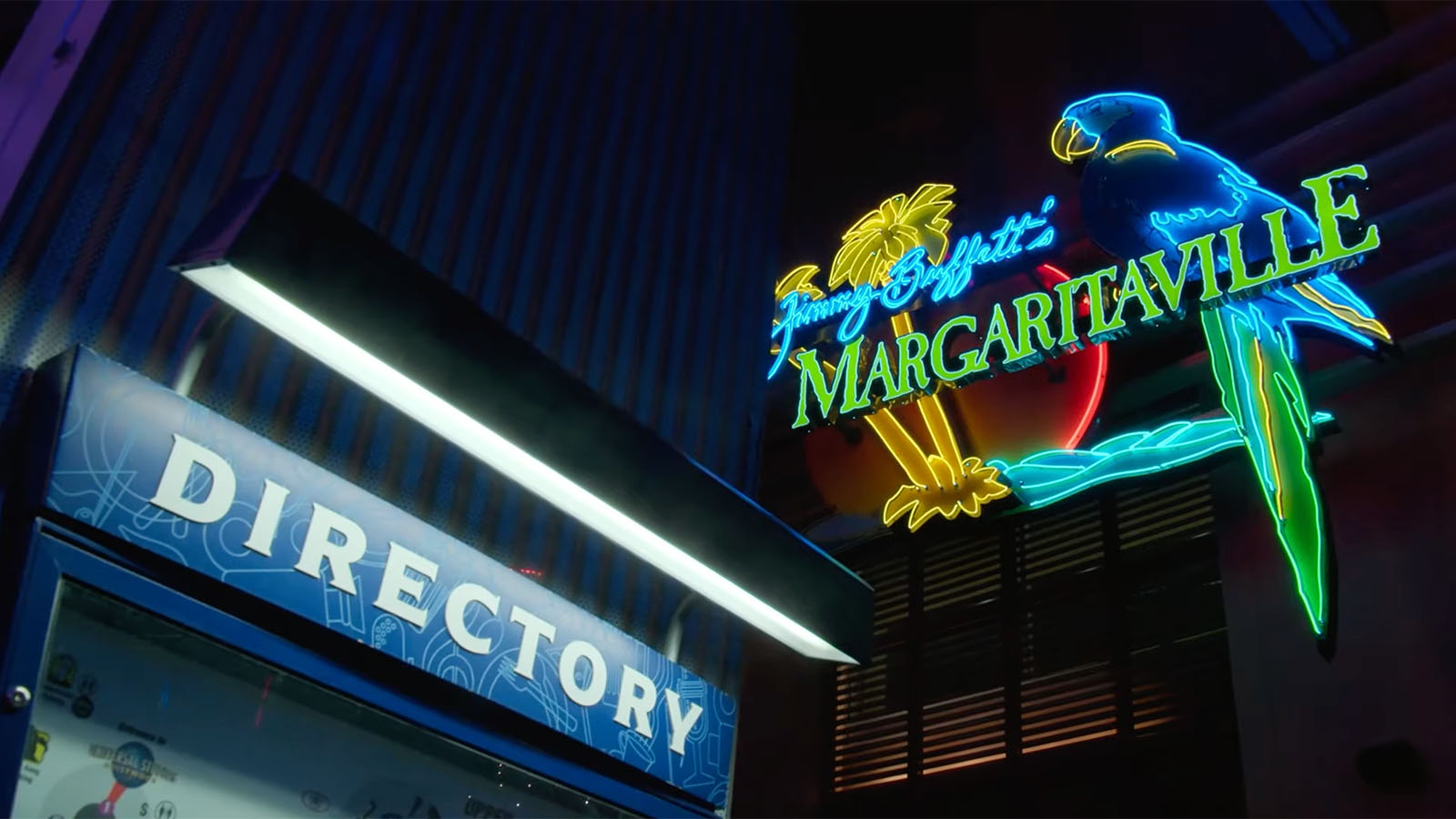
That, and when they’re in the warehouse. I feel like there was so much more that we could have shown in the warehouse. When I was watching all that raw footage, trying to tell that story, I said, “I don’t know how you guys made the choices that you did.” There really was so much there.
Adam Lichtenstein: There was stuff in that warehouse where they were communicating over the headsets that were hidden on some of the characters. Lonnie had a headset underneath his cap and there was a microphone somewhere inside his person. They’re trying to persuade Lonnie to get Ronald up to the loft and he’s talking back to them and trying to conceal what he’s up to from Ronald.
I thought that would be a whole other way to go, since the audience already knows that this is a fake situation. Why not keep going with that? But we decided to go against that.
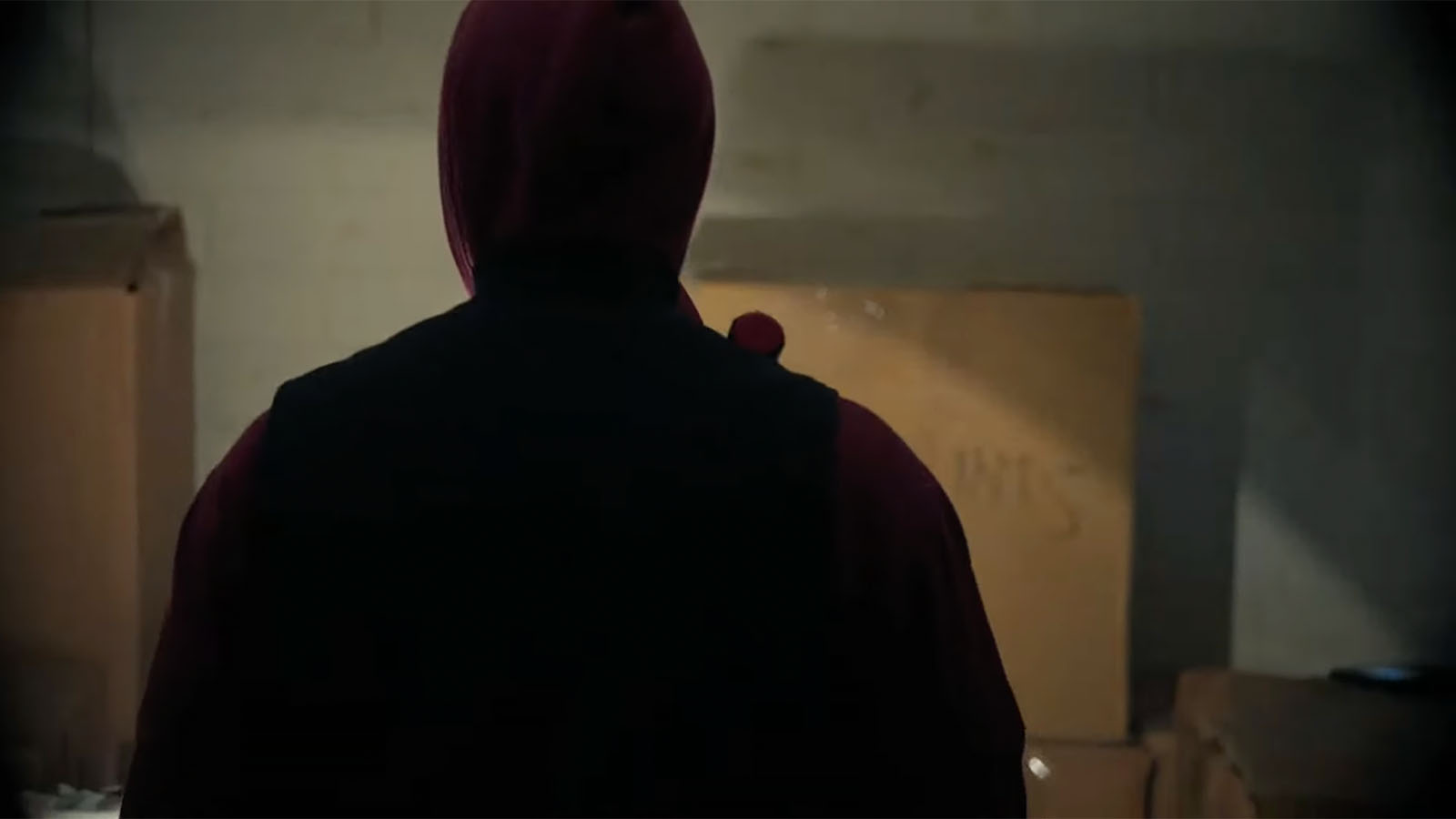
I had a love for it, I guess, because I found that material and I got attached. That would have been one way to go. I don’t think the show is any less off for it, but it would have been some other form of amusement.
MF: I wondered the same thing. You could have done it where part of the comedy is seeing the actors trying to keep these plates spinning, to keep this show working when at any moment the whole thing could collapse.
I think the negative there is that, Mary, you wouldn’t have had as much fun at the end because, along with Ronald, we get to see how this was all put together. “Oh my God, all along there was a control room full of people next door.”
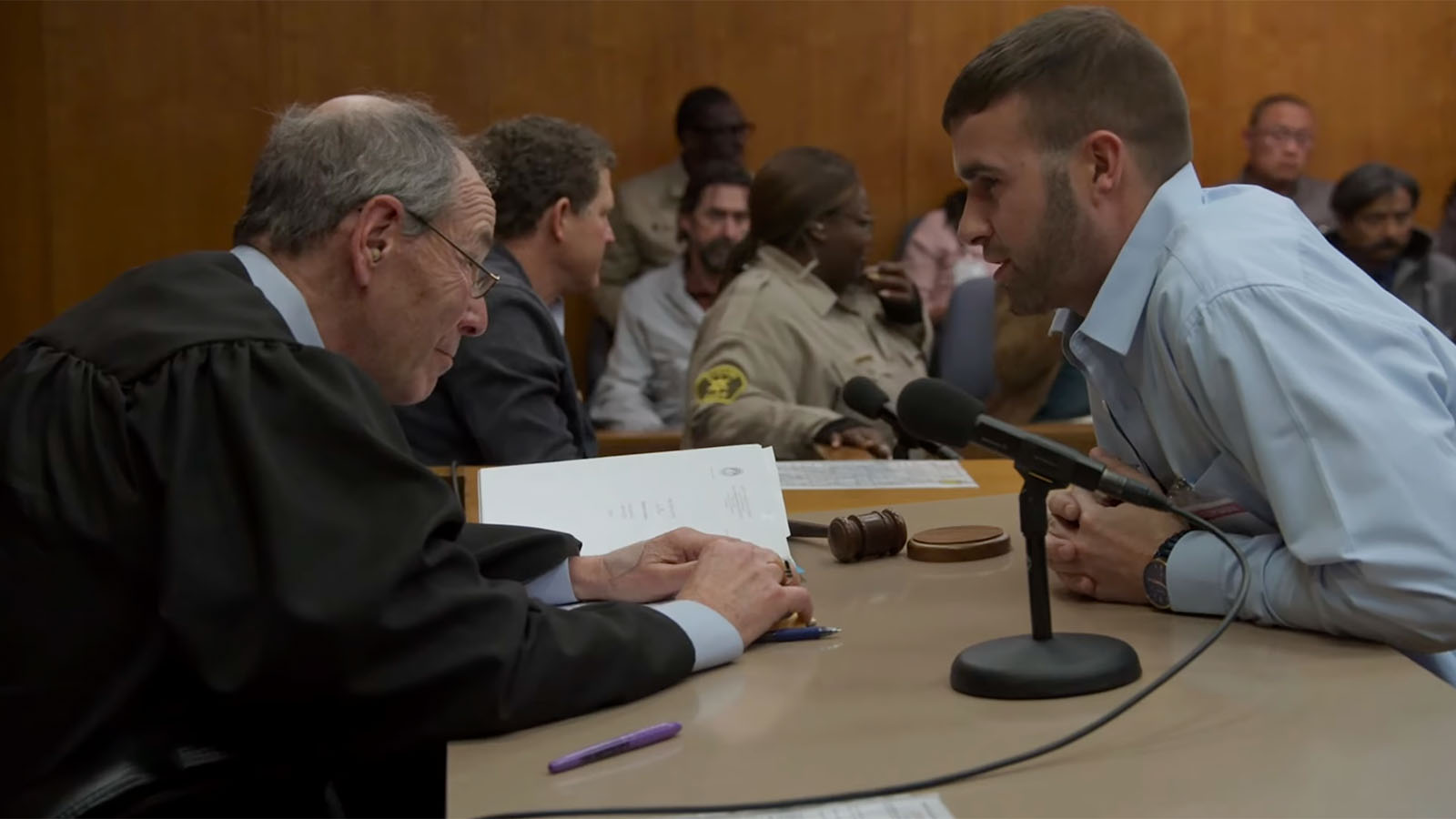
Adam Lichtenstein: That’s exactly right. That would have been taken away from episode eight. They would have taken the juice out of eight. That’s exactly right.
MF: Since you brought up the audio and microphones and hidden earpieces, was there anything uniquely challenging about working with audio on this show?
Diana Fishman: If you have multiple banks of cameras, you can’t watch them all at once. In Avid, you could watch up to nine cameras at once, if you wanted to. But you can’t listen to all the audio at once. So, it’s a slower process of watching dailies.
If there’s a conversation happening in the courtroom, but another scene is happening in the lunchroom, then you have to really go through it twice. You don’t know where the audio nuggets are going to be. If you’re only listening to the line mix, or whatever you could on a scripted show, you’ll miss something. That was uniquely difficult in this show.

MF: That reminds me of what Mary said about doing things dry. Is generally the right approach to do almost a radio edit first? Where do you begin working on a show like this? What are the building blocks?
Diana Fishman: That’s a good question. There were definitely scenes where we had to find audio pieces to fill in the gaps later. Especially with the lunches. The lunches were long.
There were always conversations that were funny in there, but it would only be twenty seconds of an hour-long lunch. There were definitely times when you had to find the best little funny moment and then figure out a different part of the table to use. They’re still eating lunch, but maybe there’s some rearranging that would have to happen in order to play a funny bit and still have it flow.
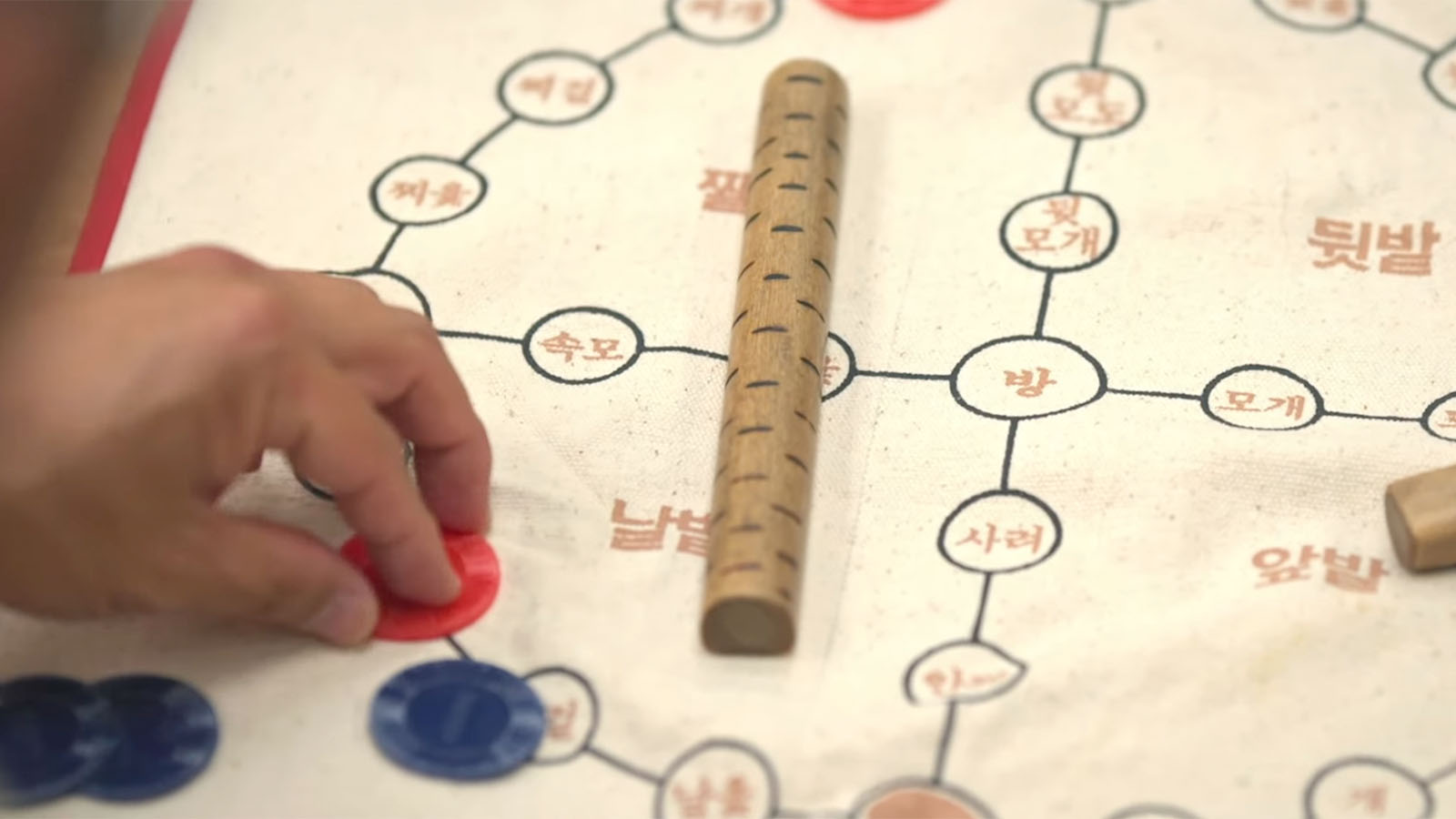
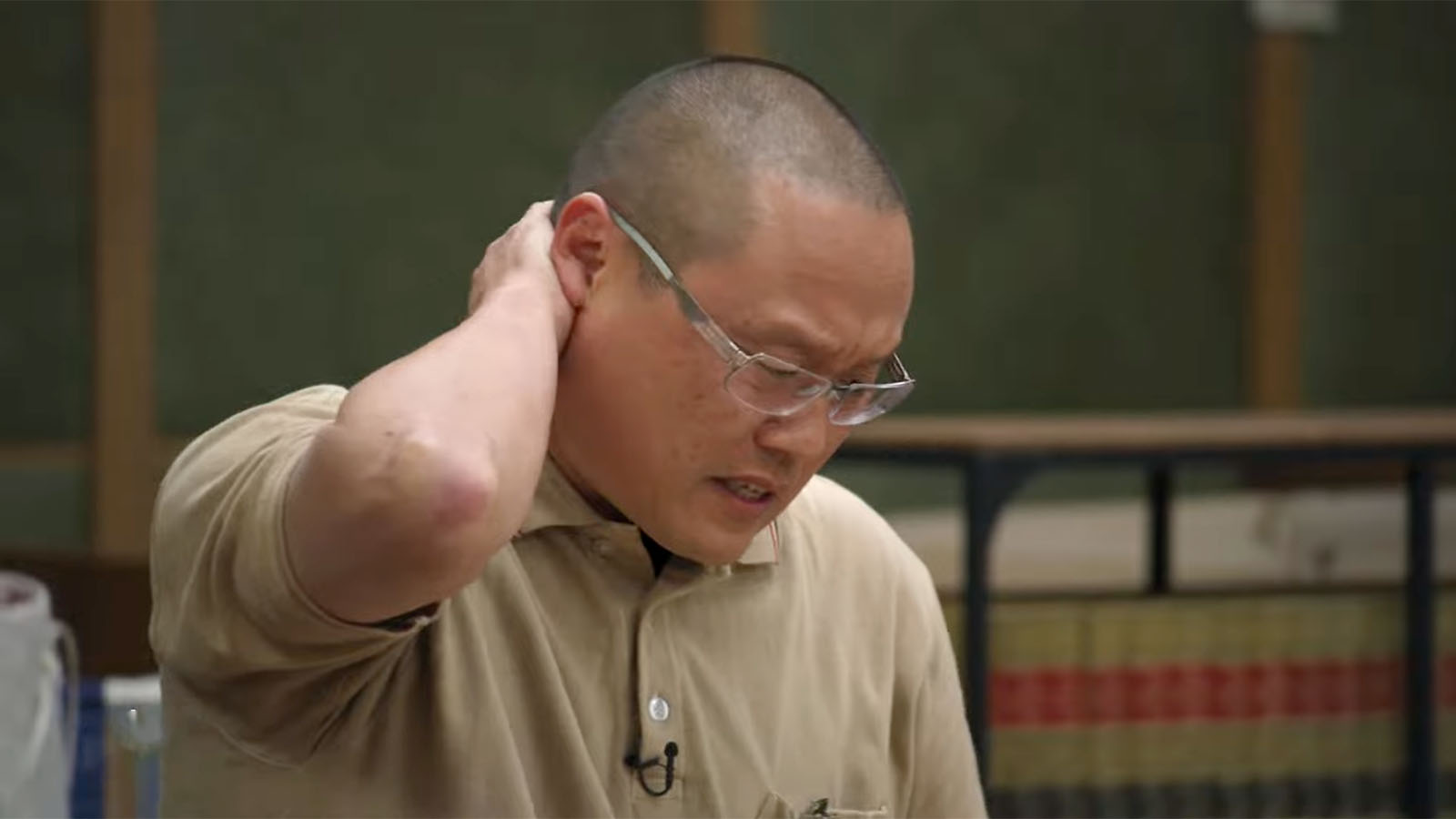
I think that that was more documentary style cutting, where you’re doing something like a radio edit. Then the parts where Ronald is having a moment with someone are more straightforward.
Adam Lichtenstein: I have to hand it to the camera people, though. They had a really good instinct for being where we wanted to be most of the time.
Maybe 10 percent or less, a moment was not covered in some way or another. You always had a big wide shot to go to if you needed to while they found them. We were never short on something. Sometimes we’d have to wait a few seconds before it caught up, but on the whole these were really accomplished camera people.
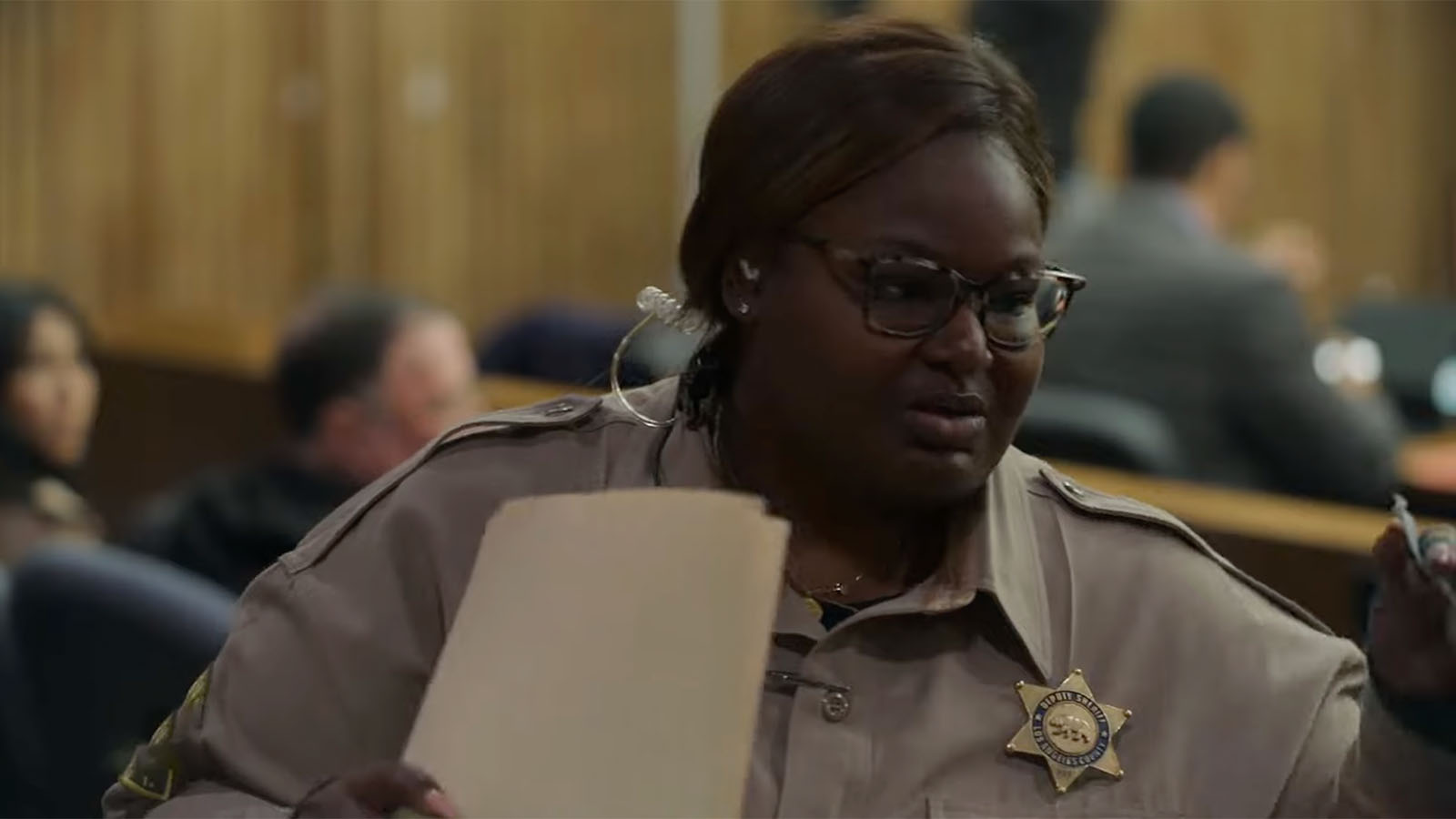
MF: I’m still trying to wrap my head around the fact that you had one assistant, considering all of the footage you had to work with. If I’m an aspiring editor, I’m starting out as an assistant. What makes for a good assistant in unscripted?
Adam Lichtenstein: A great attitude. In any of those instances where Christopher might have been overwhelmed, or any assistant might have been overwhelmed, the attitude was so winning. There was all this extra grace that you could give somebody.
They were positive and you knew that they knew how to do their job. There were a lot of demands that were being put on them at any one time. As long as that good attitude was in place, you could forgive anybody for anything. Not that we had to forgive, but there was love in our hearts for anybody who was a decent person.
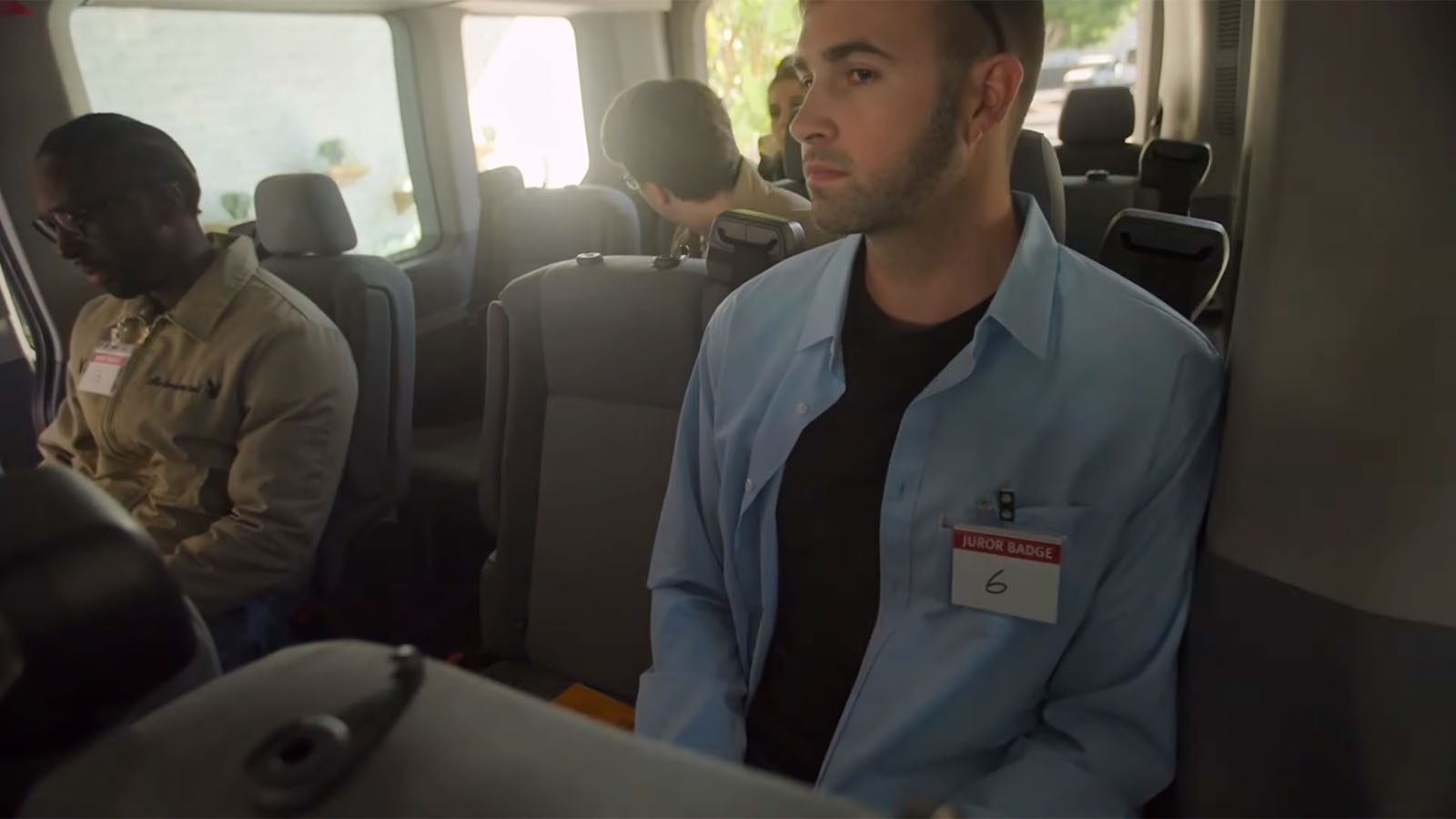
MF: I love the image of Mary having to do the last episode and all of you just jumping in your cars going, “Good luck, Mary! We’ll see you at the premiere.” For you, Adam and Diana, there were episodes you did on your own, but you also collaborated on episodes. How did you effectively collaborate on a show that required so much discovery?
Diana Fishman: This is pretty unique and our post process was a long schedule. Part of that was we would sit down and have sessions where we were just giving input and shooting ideas around. “What if we did this?” or “What if we moved that to a different spot?”
There was a ton of collaboration. It wasn’t just, “I’ll take the scene, you take that scene.” It was, “Let’s watch it together and figure out what this is going to be.” We were able to do that remotely, which was awesome.
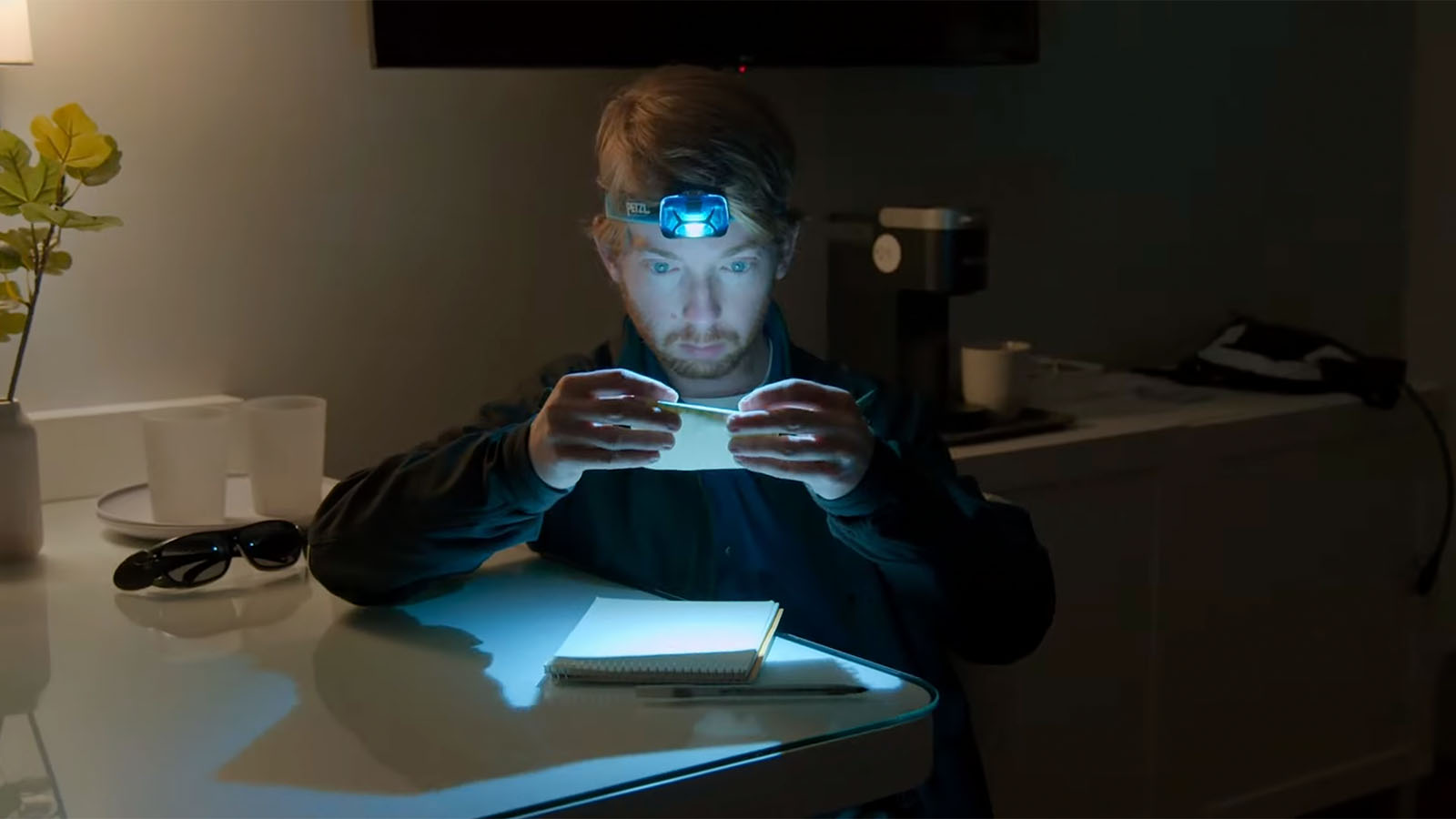
Mary DeChambres: For me, this show felt the closest to being in a writer’s room, because we really were writing the show together. This show is so well-written. I cannot speak more highly of this show’s writers. They had to write the storylines of all of the characters. They had to write the actual trial and all of that testimony and plan all of that.
Then they had to write an A, B, and C story depending on how Ronald would react to things. There are all those layers of writing as well. They’re beats. They’re not for the improv actors to go off of. But they still had to plan out, “If he does this, if he does that, what are we going to do?”
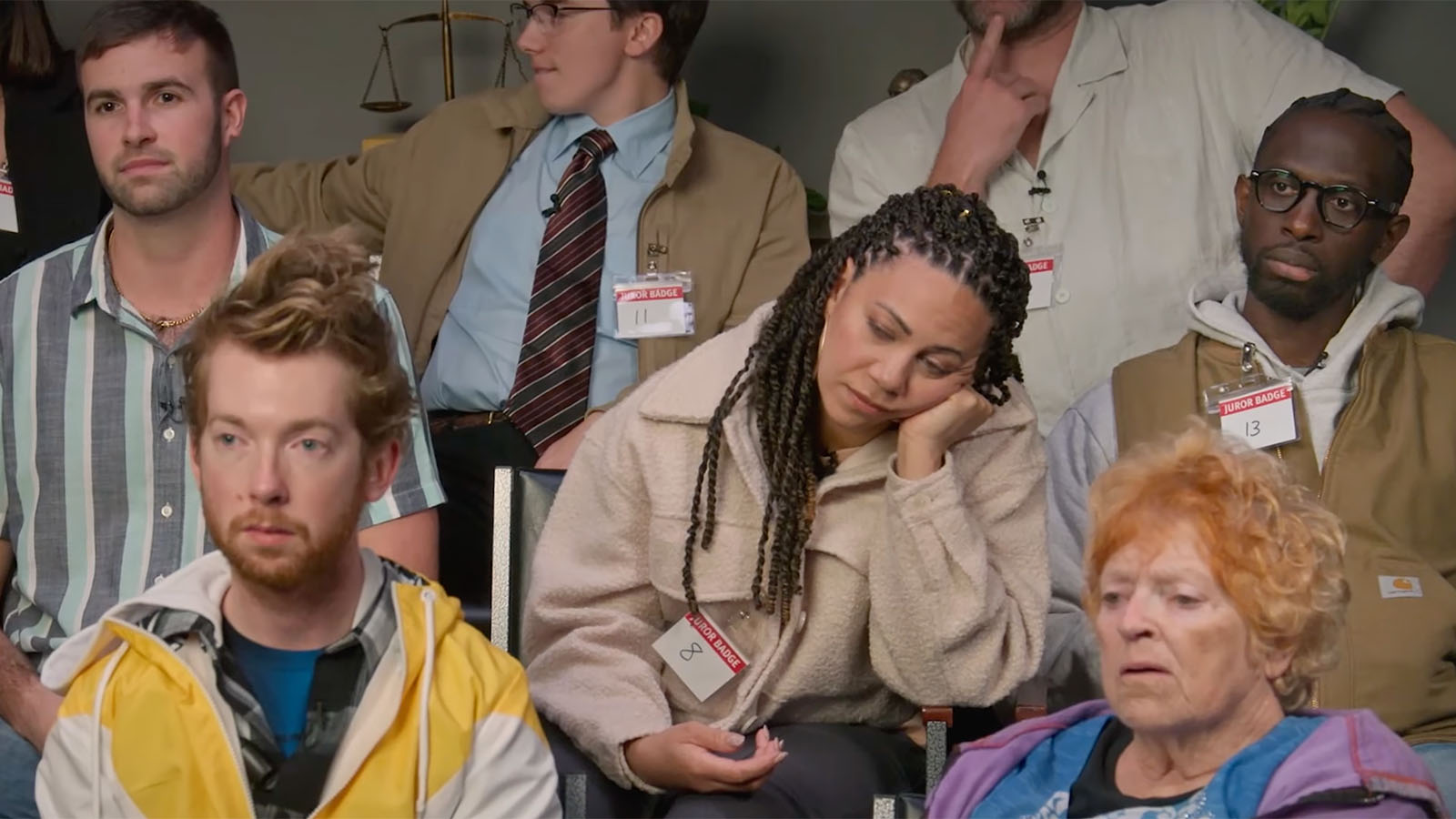
Then we wrote it again in the edit. I think that’s why it took so long, because we were writing a whole other layer to make the show come together.
MF: Is there one scene or one episode that was the most fun or that you’re the most proud of?
Diana Fishman: I will take this one. I’ll start. I think the episode was called “Foreperson”. I edited the whole “chants” beat, when Todd (played by David Brown) has the attached pants.
I love physical comedy, so that scene was really delightful to cut. But in going through all of Ronald’s cameras at the hotel, his diary cameras, and then the B -roll footage, I happened to find that shot of A Bug’s Life. Then, in his interview, he talks about having shown it to Todd.
I built that sequence around Ronald’s relationship with Todd and how he had encouraged him, not explicitly, to wear those pants. He felt responsible for Todd taking that risk and then having it be humiliating. I really think that’s the moment when the audience falls in love with Ronald, because he takes this guy under his wing who could just be made fun of, or is this really out-there character.

He’s protective of Todd. He’s loving towards him. So there’s this juxtaposition of the physical comedy and Ronald’s compassionate storyline. I’m very proud of how that sequence came out.
MF: Everybody wants a friend like Ronald. And for those listening that haven’t seen the show, “chants” are “chair pants.” The pants that Todd wears have crutches on the butt, so he can prop himself up. If you haven’t seen the show, that right there gives you an indication of what you’re in for.
Okay, favorite moments for Mary and Adam?
Mary DeChambres: My very favorite part is the ending of the finale when we get to see that Ronald is still friends with all the cast. They’re still hanging out. They’re still connecting with each other. It’s still a very warm and endearing experience for him. I love that we get to have that closure at the end, because how do you finish a show like this?
Coming up with the ending was actually a bit of a challenge. It’s something that Jake, Cody, Andrew, and I worked through. We tried a couple different versions, but I’m really happy with the way the ending came out.

There was one scene I did want to mention, one scene that got cut that I think was hilarious. Todd, our “chants” character wears a “Jorf” shirt.
One of the storylines is that the “Jorf” shirt ink is actually toxic. After Todd wore the shirt, it burned his actual skin. So he takes the shirt off in the courtroom and there’s just the word “Jorf” burned across his chest, which is further evidence of how toxic the work environment was. It plays into all that.
Just finished watching the 1st five episodes of Jury Duty on Freevee and had to check to see if either “jorf” or “soaking” were trending and I wasn’t let down.
— Keith Dever (@keith_dever) April 23, 2023
Great show and it’s nice to know that people like Ronald Gladden are real in this world. pic.twitter.com/mD3ezpZmXN
But there just wasn’t enough time to include it. The choices had to be made, but that was so funny to me.
MF: How about you, Adam?
Adam Lichtenstein: At the beginning of my career, I had all these high ideals about the kind of project I wanted to work on, what it had to be about.
But after all these years, the thing that means the most to me is getting along with my bosses and with my colleagues. When we’re thrown a job or something particularly difficult, we should be able to pull together and, in good spirits, make something work.
After all these years, the thing that means the most to me is getting along with my bosses and with my colleagues.
We had a lot of trouble with episode 107. It went through the mill a lot. Every one of us worked on it to some extent over the course of a very long schedule, and it was never quite right. We kept getting thrown curveballs. It went on for a long time and it was very difficult.
People came and went during the course of the schedule and, at one point, one of the producers took over and had an idea about what he wanted for it in broad terms. Diana and I went after it. We took different chunks of it at different times and we handed it back and forth.
This to me was one of the more wonderful experiences on this job, getting to work with my colleagues so closely and to a very productive degree. When Diana and I were done with it, we handed it back to the producer and he was completely over the moon. He couldn’t have been more congratulatory and grateful. We really made his week.
That trickled down to everybody else. They were so grateful that we had finally nailed it. It felt like not only a turning point for the project, but a turning point in our respective relationships with each other. It was a great way for us to end the project together, on a big high note like that.
MF: In the cast interviews, James Marsden talks about how he questioned the morality of being a part of this show. You’re going to be manipulating a person, taking their life and saying that three weeks of it were fake. It’s not real.
Going into this project, did you ever ask yourself, “Is this the right project for me?” Is that something that you often do when you’re taking on a project?
It was made very, very clear from the get-go that this was supposed to be positive. This was not a prank show.
Diana Fishman: In terms of the ethical nature of the experiment, it was made very, very clear from the get-go that this was supposed to be positive. This was not a prank show.
The joke was never to be on the hero character. You can make fun of everybody around him, but he is not the butt of the joke. This is supposed to be comedy, but it’s comedy with heart.
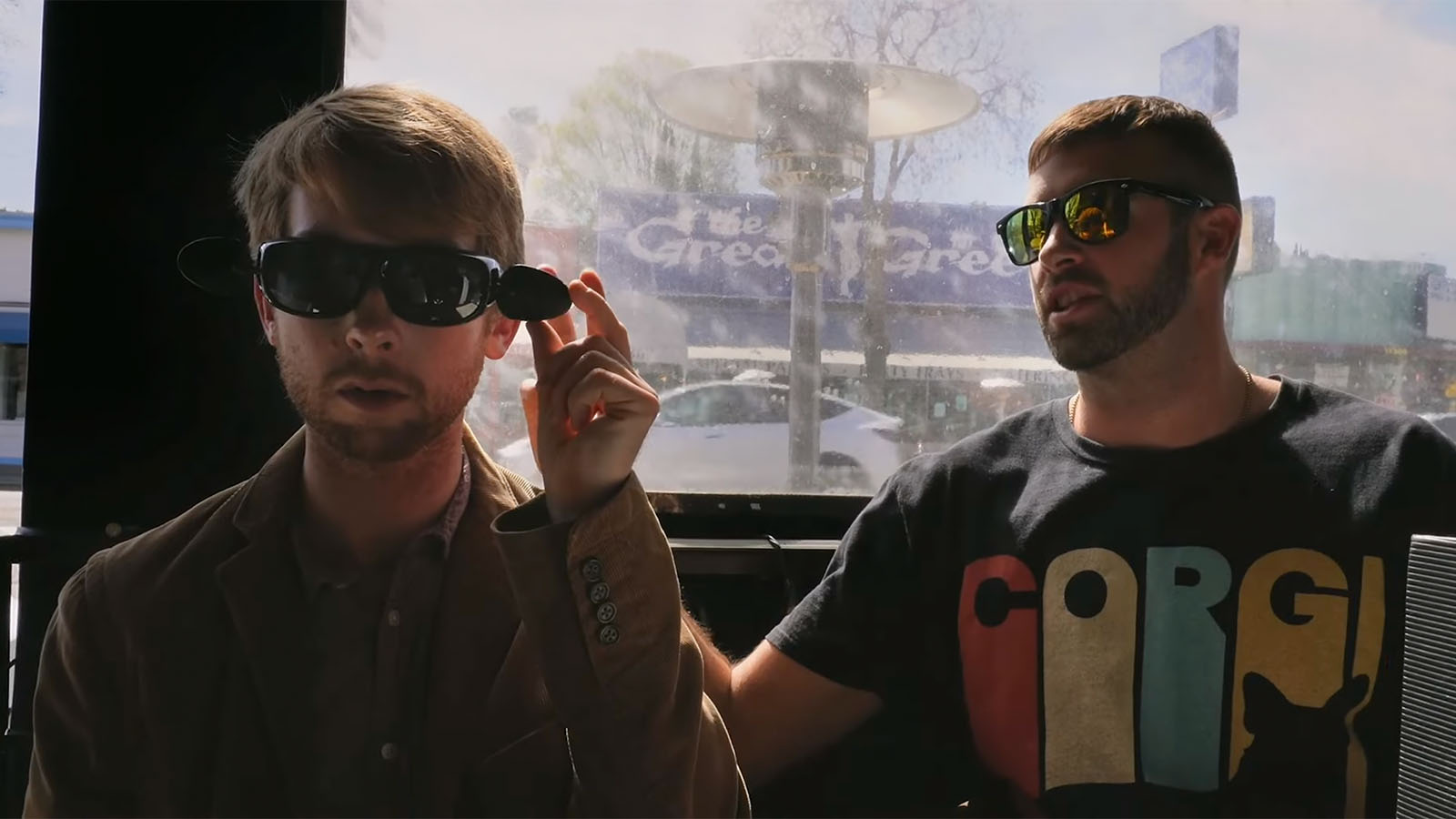
From the start, that was non-negotiable across all the writers and all of the producers. I can only speak for myself, but I think there was never a question about the moral nature of the show or the premise.
There was some discussion of, “Do we show scenes that don’t include Ronald? If the cast are being their characters in a moment and he’s in an interview, what are we using?”
That’s part of the discussion, “What kind of show is this?” Is this a mockumentary? Is it a sitcom? Is it a documentary? Since this was never done before, really, the rules of how to play these characters were a challenge, but that was never an ethical challenge. It was more like a “What is this show?” challenge.

I came from doing reality TV and I really tried to move away from it. Reality editing is extremely difficult and it takes a tremendous amount of skill. I have enormous respect for it. I was working to get out of it, because it’s so hard. It’s really, really challenging!
When I started this project, before the other editors came on, I was by myself looking at footage. I was thinking, “This is a slog! I don’t even know what this is going to be. What am I doing? This is just watching footage. Where’s the story?”
Then, fast-forward a year, and some of my best relationships have come out of this project. Jury Duty is more-watched than anything I’ve worked on in the past. The comedy is so key. It was such a huge learning experience. It taught me to check that assumption at the beginning of a project of what it’s going to be.
They always called him the hero. Always, from the very beginning.
Mary DeChambres: When I had my first interview with Cody and Andrew, they referred to Ronald as the hero. They always called him the hero. Always, from the very beginning. So that set the tone in terms of how he was going to be treated and how we were going to treat this footage, to really give it respect.
So, ethics really didn’t even come into my consideration with the project. I was just excited to do something in the comedy realm. Mockumentary is so fun, and I’m also a big fan of Borat. Nick Hatton has a background in working on the Borat films. I knew that some of that would be in play with this project, in terms of that kind of comedy, but also with some heart.

Adam Lichtenstein: I also inherited a message that was loud and clear, which was “The audience is in on the joke, but the joke is not Ronald.” There would be no punching down on Ronald. “Whatever you do with Ronald, punch up to Ronald because he’s so tall, but no punching down.”
Yes, it was a hero’s journey. We wanted Ronald to look back on this at some point in his life, or many points in his life, and be proud of his participation.
MF: A lot of times I have to write supporting content for these interviews. I love it when an editor actually shows up with their own bio. In this case, Adam, you have a wonderful bio that I’m going to share with everybody.
“Born with a natural love for timecode, Adam showed an early preference for non-drop frame, then rose through the editorial ranks pretending to enjoy sports, overusing terms like ‘shots on goals’, ‘swish’, ‘in your face’, and ‘That’s what I’m talking about!’ without the slightest idea what he was talking about.”
Adam, I just wanted to say thank you so much for giving me the gift of that bio.


